HYATT, ALVIN (1832-1890). Private, 37th Regiment, New York State National Guard, Company E. Of Irish birth, Hyatt served for 30 days in the 37th Regiment’s National Guard in 1864. He last lived at 98 Bond Street in Brooklyn. His death is attributed to “fatty degeneration.” Section 206, lot 21347, grave 613.
Civil War Bio Search
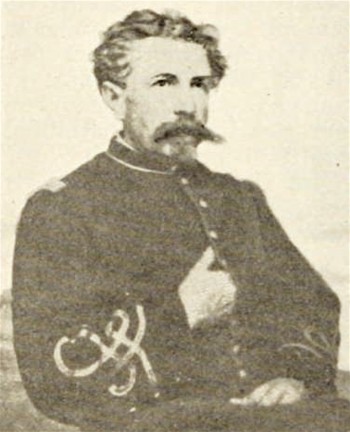
HYATT, JOSEPH C. (or E.) (1814-1893). Captain, 11th New York Cavalry, Company E; first lieutenant, 32nd New York Infantry, Company F. Born in Westchester County, New York, the 1850 census notes that Hyatt lived in New York City. During the Civil War, Hyatt enlisted as a first lieutenant on May 14, 1861, at New York City, was commissioned into the 32nd New York on May 31, and was dismissed on February 15, 1862. He re-enlisted as a captain on June 7, 1862, at Washington, D.C., and was commissioned into Company E of the 11th New York Cavalry that same day.
In Reminiscences of Bugler Tisdale, Company D, Tisdale recalled an anecdote that occurred after the Second Battle of Bull Run. Tisdale, upon hearing the braying of mules in the field where food was about to be served, said that the braying noise was Captain Joe Hyatt “hollering” to his men. Much to Tisdale’s surprise, Hyatt was standing behind him and was madder than any man he ever saw. After fuming and sputtering, Hyatt ordered Tisdale to Company D’s headquarters where he told Tisdale’s lieutenant that his man was guilty of insubordination and other crimes. Luckily for Tisdale, Hyatt was calmed with a drink and, after a talking to, was sent to his tent; apparently, Tisdale’s lieutenant and the other officers found the incident amusing and it was “forgotten.” Hyatt mustered out on June 6, 1865, at Memphis, Tennessee. In 1890, his application for an invalid pension was granted, certificate 696,257. He last lived at 11 Montgomery Avenue in Staten Island. His death was attributed to apoplexy. Section 141, lot 24745.

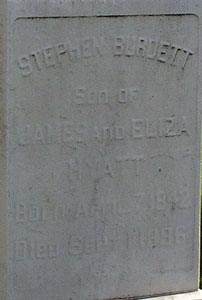
HYATT, STEPHEN BURDETT (or BURDETTE) (1842-1896). Private, 7th Regiment, New York State National Guard, Company D. A New York City native, he entered the College of the City of New York at age 14, then completed his graduate studies Columbia Law School. As per his obituary in the New York Sun, which confirms his Civil War service, Hyatt served with the 7th Regiment for 30 days in 1863 as of June 17, when the unit was sent to Washington, D.C. Remaining active in military affairs, he was a lieutenant in Company D of that Regiment and was a member of the 7th Veteran Association.
In civilian life, Hyatt practiced law and was elected judge of the City Court in 1881. On December 9, 1885, he mustered into Lafayette Post #140 of the G.A.R.; he listed his occupation then as judge of the New York City Court. In addition, he belonged to the Harlem Republican Club and the New York Athletic Club. Hyatt was the brother-in-law of William H. Kipp (see), who also served in the 7th Regiment and was chief clerk of the Police Board. He last lived at 11 West 121st Street in Manhattan. His death was caused by cerebral apoplexy. Section 182, lot 11779.
HYDE, ALFRED (1819-1862). Private, 71st Regiment, New York State Militia, Company A. A native of Brooklyn, he served for three months during 1861 when he was 42 years old. He last lived on Bedford Road in Brooklyn. His death was caused by rheumatism. Section B, lot 9895, grave 541.
HYDE, EBENEZER J. (or I.) (1816-1892). Corporal, 7th Regiment, New York State Militia, Company A. Hyde served in the 7th Regiment as a private for 30 days in 1861. When the regiment was re-activated in 1863, and part of the New York State National Guard, he served with the rank of corporal for 30 days. He joined other veterans in the G.A.R. after the War. He last lived at 107 West 95th Street in Manhattan where he died of apoplexy. Section 15, lot 7898.

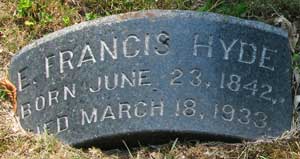
HYDE, EDWIN FRANCIS (or E. FRANCIS) (1842-1933). Corporal, 22nd Regiment, New York State National Guard, Companies G and F. Born in New York City, his family roots trace back to a prominent family in England that settled in Connecticut in colonial times. As per Charles Elliott Fitch in Encyclopedia of Biography of New York, Volume 4, Hyde’s Connecticut ancestors include Matthew Griswold, chief justice and governor of Connecticut and John M. Niles, United States senator and postmaster general in President Martin Van Buren’s administration. Educated in New York City and Middletown, Connecticut, Hyde was a graduate of the College of the City of New York and Columbia Law School.
After enlisting as a private and mustering in on May 28, 1862, Hyde served for three months with the 22nd Regiment’s Company G, and mustered out at New York City on September 5. A year later, he returned to the 22nd as a corporal in Company F when the regiment was reactivated for 30 days from June 18 though July 24, 1863. A member and commander of the George Washington Post #103 of the G.A.R., his obituary in The New York Times noted that he served at Harpers Ferry, Virginia (now West Virginia), with the 22nd New York during the Civil War.
In civilian life, he returned to the study of law, began his practice in 1863, and became an expert in financial law, wills and estates, and banking. On November 18, 1868, he married Marie Brown, the daughter of a prominent New York merchant. The 1870 census listed him as a lawyer living in Manhattan. The 1880 census reports that he lived with his wife and in-laws in Manhattan and was a lawyer. Hyde held the position of vice-president of the Central Trust Company for 33 years until his retirement in 1919. When he applied for a new passport on August 14, 1920, to visit England for health reasons, he noted that he was in England and Scotland in June and July of 1913 and in England in June and July of 1914; he then lived at 36 West 38th Street in Manhattan and noted that he was a retired banker. Hyde described himself as 5′ 8½” tall with blue eyes, a prominent nose, high forehead, light hair, moustache, fair complexion, round chin and oval face.
A philanthropist and patron of the arts, Hyde was president of the Philharmonic Society from 1888 through 1901. In 1903, he introduced the practice of bringing guest conductors from abroad to the New York Philharmonic. He was a personal friend of Tchaikovsky, the legendary Russian composer. Fitch’s biography notes that Hyde was esteemed in both American and European musical circles and was a patron of numerous organizations that promoted orchestral music, musical study and composition. He had an extensive art collection, was a patron of the Metropolitan Museum of Art, and his library contained the scores of many famous musical compositions. An avid amateur astronomer, he traveled near and far to see total solar eclipses. As per his obituary in the Brooklyn Daily Eagle, which confirms his Civil War service, he viewed every solar eclipse from 1900 to 1932 and crossed the Atlantic 100 times. When he was 90, police discovered that his butler and an accomplice had stolen close to $100,000 worth of furnishings and antiques from his museum-like residence. Active in religious affairs, he was president of the American Bible Society 1924-1930, and a member of the New York Sabbath Day Committee, both organizations to which he willed large parts of his estate. In addition, he was an elder in the Presbyterian church, a trustee of the Presbyterian Board of Home Missions, a trustee of the Princeton Theological Seminary as of 1898, and a member of the Dutch Reformed Church. Hyde was a member of Sons of the Revolution, the American Geographical Society, the Society of Colonial Wars, and the New England Society in New York. Hyde also belonged to the Century, Union League, Metropolitan, University, Riding, City and Downtown Clubs. His funeral was conducted by the renowned Dr. Norman Vincent Peale at the Marble Collegiate Church in Manhattan. He last lived at 36 West 58th Street in Manhattan. Section 9, lot 13695.
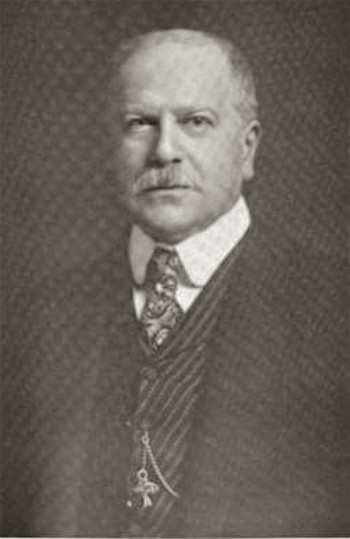

HYDE, HENRY M. (1826-1864). Acting assistant paymaster, United States Navy. Hyde, who married in 1857, began his service in the United States Navy as an acting assistant paymaster on May 24, 1862. According to his Navy pension records, Hyde was suffering from phthisis (tuberculosis) while aboard the steamer USS Genesee on October 6, 1863, and was deemed unfit for duty. It was recommended that he be sent North for treatment. At that time, the records indicate that Hyde had apparently been suffering for several months; his right lung was much afflicted and his left lung showed abnormal resonance. The medical records questioned whether Hyde was stricken prior to his service in the Navy; Hyde’s physician in Brooklyn attested that he was of sound health before he entered service. Hyde died of tuberculosis at his home on Bedford Avenue in Brooklyn on February 15, 1864. His remains were moved to their present location on August 15, 1864.
The conflict as to whether Hyde died in the line of duty first resulted in the rejection of Margaret Hyde’s application for a widow’s pension on November 10, 1865. Once again, the family physician, who knew the family for a long time, filed an affidavit attesting to Hyde’s good health upon entering the Navy and questioning whether Hyde would have been deemed fit for service if he was afflicted with phthisis. Ultimately, in 1870, Margaret Hyde’s widow’s pension from the Navy under certificate 1,562, was approved at $20 per month and post-dated to February 1864. Hyde was also survived by three children under the age of seven. Section 169, lot 15027.
HYDE (or HODT, HUGH), JOHN M. (1834-1902). Private, 15th Connecticut Infantry, Company K. Hyde was born in Connecticut. According to the 1850 census, Hyde lived with his parents and siblings in Norwich, Connecticut. The 1860 census reports that he was single and lived in Wallingford, Connecticut; family records indicate that he married his first wife that same year. A resident of Wallingford, Connecticut, he enlisted on August 6, 1862, mustered into the 15th Connecticut Infantry on August 25, and mustered out on June 27, 1865. Hyde remarried in 1884. As per the 1900 census, he had been married for 16 years, worked in produce, and lived at 203 Gates Avenue in Brooklyn. He last lived in Brooklyn. In 1903, Mary Eliza Hyde, who is interred with him, applied for and received a widow’s pension, certificate 666,500. Section 25, lot 5378.
IDESON (or IDASON, IDEASON), III, ALLISON (or ALERSON) BAPTISTE (1819-1866). Private, 53rd New York infantry, Company G; 132nd New York Infantry, Company F; 10th New York Veteran Reserve Corps. Ideson was born in New York, and was the third in his family who bore that name. The United Methodist Church Records lists a membership date for Allison B. Ideason on April 6, 1827, at New York City. He is listed in the 1840 census as living in a household in New York City of six free white persons; one person, presumably him, was employed in manufacture and trade. As per the 1840 and 1857 New York City Directories, he was a jeweler; in 1857, he lived at 81 West 28th Street. Ideson was married to Margaret Castree; by 1851, they had four children, including a son who bore his name. As per the United States Craftperson Files, Ideson is listed as a jeweler in New York City for 1853-1855.
During the Civil War, Ideson enlisted as a private at New York City on July 5, 1862, and mustered into the 53rd Infantry on August 22; he was listed as age 43 on his soldier record. He was transferred into Company F of the 132nd Infantry on September 10, 1862, and discharged for disability on April 29, 1863, at New Berne, North Carolina. His July 1, 1863, Draft Registration, indicates an age of 40; he listed his occupation as “brass.” The New York Town Clerks’ Registers of Men Who Served in the Civil War shows that Ideson re-enlisted at Saugerties, New York, on October 14, 1864, and mustered into the 10th New York Veteran Reserve Corps on that day; at that time, he lived in Kingston, New York and was married. He died in New York City. Section 180, lot 13758.
ILSEMANN, CHARLES T. (1829-1869). Private, 45th New York Infantry, Company K. Ilsemann, a German by birth, enlisted at New York City as a private on September 6, 1861, mustered into his company three days later, and mustered out on October 8, 1864, at Nashville, Tennessee. He last resided at 128 Cedar Street in New York City. He succumbed to phthisis. Section 137, lot 30473, grave 1.
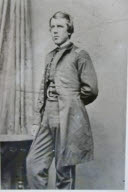
ILSLEY, SILAS AUGUSTINE (1840-1918). Lieutenant colonel by brevet; major, 158th New York Infantry; first lieutenant, 56th New York Infantry, Company I; second lieutenant, 84th New York (14th Brooklyn) Infantry, Company E. After enlisting at Brooklyn as a corporal on April 18, 1861, he mustered into the 14th Brooklyn on May 23, was promoted to second lieutenant on August 1, 1861, and served with the unit until his discharge on February 17, 1862, when he was commissioned into the 56th New York Infantry. Ilsley was discharged on June 25, 1862, and soon thereafter on August 22, was commissioned into the 158th New York as a first lieutenant and adjutant. He was subsequently commissioned as an adjutant on November 10, 1862. Colonel James Jourdan (see), writing from Morehead City, North Carolina, on February 10, 1864, acknowledged Ilsley for his “indefatigable efforts in assisting with the operations of the sub-district of Beaufort.” He rose to the rank of major on October 17, 1864, and was discharged on February 17, 1865. On March 13, 1865, he was brevetted lieutenant colonel of the United States Volunteers. At the time of his death from arteriosclerosis, he lived in Middlebury, Vermont. Section 176, lot 20190.
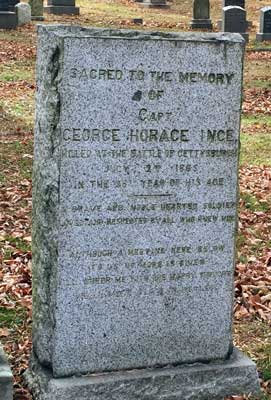
INCE, GEORGE HORACE (1824-1863). Captain, 66th New York Infantry, Companies I and A. Of English birth, he enlisted as a private on November 12, 1861, at New York City, mustered into Company I on November 20, and was promoted to first sergeant the next day. A promotion to first lieutenant took place on December 16, 1862, followed by one to captain on March 8, 1863, that became effective upon his transfer to Company A on March 17. He succumbed to chest wounds suffered on July 2, 1863, at Gettysburg, Pennsylvania, and died there four days later. Interment at Green-Wood was on October 22, 1863. Section 46, lot 11951.
INGRAM, DAVID (1835-1896). Private, 13th Iowa Infantry, Company I. A resident of Marshall County, Iowa, Ingram enlisted as a private on October 26, 1864, mustered into the 13th Iowa the same day, and mustered out on July 21, 1865, at Louisville, Kentucky. His last residence was at 910 Van Alst Avenue in Astoria, Queens. His death was due to tetanus. Section 167, lot 17098, grave 2.
INNES, ALEXANDER (1836-1890). Private, 79th New York Infantry, Company A. A native of Scotland, he enlisted as a private at New York City on May 13, 1861, mustered into the 79th New York on May 28, and was discharged for disability on June 15, 1861, at Georgetown, D.C. He last lived on 8th Avenue in Manhattan. Phthisis (tuberculosis) was the cause of his death. Section 6, lot 20118, grave 713.

INSKIP, JOHN (or JOSEPH) S. (1817-1884). Chaplain, 84th New York (14th Brooklyn) Infantry. Inskip, who was originally from England, enlisted at Brooklyn at age 44 on April 18, 1861, was commissioned into the 14th’s Field and Staff on May 23 of that year, and was discharged on July 21, 1862. The 84th wore distinctive red trousers and Confederate General Stonewall Jackson referred to the regiment as red-legged devils. Inskip was on the field at the Battle of First Bull Run, Virginia, and wrote in a letter to his wife, “Of course you have heard of our disaster. The struggle was a fearful one, and many, very many, of our poor fellows, are now sleeping that sleep from which there is no waking… At first the Confederate forces gave way, and but for some singular mismanagement we would have won the battle. We really had more than half succeeded. But for some cause, I know not what, our success was not followed up, and the fortune of the day turned against us.”
A Methodist minister, he was a proponent of the Holiness Movement, a revivalist teaching that believed in living a pure life based on faith. In 1867, he convened the first Holiness camp meeting at Vineland, New Jersey, that attracted 10,000 people on the Sabbath. The group still exists today. He last lived in Ocean Grove, New Jersey. Section 51, lot 11548.
INSLEE, JOHN H. P. (1841-1875). Private, 22nd Regiment, New York State National Guard, Company F. A native of Brooklyn, Inslee enlisted at New York City on May 28, 1862, mustered into the 22nd Regiment the same day, and mustered out on September 5 after serving three months. He last lived on Eighth Avenue in Manhattan. The cause of his death was recorded as due to “gangrene of the lungs.” Section 185, lot 18184.

IRELAND, WILLIAM H. (1837-1908). Captain and assistant quartermaster, United States Volunteers; first lieutenant and quartermaster, 90th New York Infantry, Companies E, F, and H. Born in Scotland, Ireland enlisted and mustered into Company E of the 90th New York as a private at Guilford, New York, on October 28, 1861. During his service, he was promoted to second lieutenant on February 7, 1862, to first lieutenant on October 7, 1862, transferred to Company F at some point, then to Company H on February 15, 1863, and was reassigned to Company E on April 6. After his promotion to first lieutenant and quartermaster on August 29, 1864, he was transferred to the Field and Staff on September 3. Ireland also served as a captain and assistant quartermaster in the United States Volunteers.
His death certificate notes that he was married, and had been a carpenter. Ireland was a member of the South Reformed Church. His last residence was 5915 Fourth Avenue in Brooklyn, the home of his son-in-law Hans Hansen and the site of his funeral. His death was attributed to pneumonia. As per his obituary in the South Brooklyn Home Talk, he was survived by his widow, Helen née Collins, and five daughters. Section 135, lot 14964, grave 31.
IRONMONGER, FRANCIS McCREADY (1829-1907). Major, 16th Virginia Infantry, Company H, Confederate States of America; captain, 39th Virginia Infantry, Company B. Born in Portsmouth, Virginia, and educated at the Portsmouth Military Academy, he was a billiard saloonkeeper according to the 1860 census. He served in the Confederate Army as captain of the 39th Virginia beginning June 10, 1861, and then transferred to Company H of the 16th Virginia with the rank of captain on February 14, 1862. The muster roll for July 1862 indicates that he was elected captain on April 13, 1862, near Drewry’s Bluff, Virginia. Rising to captain and acting quartermaster on November 6, he became major and quartermaster to General Mahone on December 3, 1862, an appointment that was revoked by Congress in August 1864. He then returned to the post of captain and acting brigade quartermaster to General Weisiger until the close of the hostilities.
Ironmonger was a railroad agent in Norfolk, Baltimore and New York City after the Civil War. As per his obituaries in the New York Evening Post and the Brooklyn Daily Eagle, he was the New York representative for the Associated Railroads of Virginia for twenty years, retiring from that post in 1895. His obituary in the Brooklyn Daily Eagle noted his membership in the Southern Society and the Freemasons. Both obituaries confirmed his Civil War service. He last lived at 568 Jefferson Avenue in Brooklyn. Section 194, lot 27871.
IRVINE, SAMUEL (1839-1932). Private, 93rd Regiment, New York State National Guard, Company B. For 100 days in 1864, Irvine served with the 93rd New York National Guard. An active veteran, he was a provost marshal in charge of the grandstands at Eastern Parkway’s Memorial Day (originally Decoration Day) services in Brooklyn and a commander of the George C. Strong G.A.R. Post #534. That post once had 250 members; at Irvine’s death, only two remained. In private life he was a butcher in Manhattan and Brooklyn and was known as “Uncle Sam.” For most of his working life, he lived at 918 Lafayette Place in Brooklyn before he moved into his nephew’s home in Jamaica, Queens, where he died at the age of 92. Section E, lot 20581.
IRVING, JAMES F. (1844-1896). Corporal, 8th Regiment, New York State Militia, Company C. Born in New York, he enlisted in 1861 as a corporal for a period of three months and mustered into Company C of the 8th Regiment. His last residence was 5 West 116th Street in Manhattan. After his death from pneumonia, Sarah D. Irving, who is interred with him, applied for and received a widow’s pension in 1897, certificate 457,895. Section 58, lot 4178, grave 10.
IRWIN, JAMES (1829-1863). First sergeant, 82nd New York Infantry, Companies A and E. Born in Ireland, Irwin resided at 40 Vestry Street in New York City before he enrolled in the military. He enlisted as a private on May 21, 1861, at New York City, mustered immediately into Company A of the 82nd New York and was transferred intra-regimentally to Company E on July 15, 1861. He rose through the ranks, beginning with corporal, then becoming sergeant, and finally first sergeant on January 1, 1863. He was killed at Gettysburg, Pennsylvania, on July 2, 1863. Section 24, lot 8505.
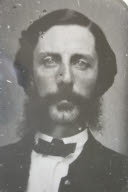
ISAACS, CHARLES L. (or S.) (1822-1882). Second lieutenant, 5th New York Infantry, Companies A, Band, E, and K; 104th New York Infantry, Company K. Born in New York City, he enlisted there on April 25, 1861. On May 9, 1861, he mustered into Company A of the 5th New York. He was transferred to the band on May 4, was promoted to fife major on May 14, and musician on January 1, 1862. On that date, he transferred into Company E. Subsequently, he became an acting ordnance sergeant at Fort Federal Hill in Baltimore, Maryland, in March and April of 1862, and was promoted to second lieutenant and appointed regimental quartermaster on March 5, 1863, to date from February 27, and appointed second lieutenant of Company K on March 30 to date from March 21. He mustered out on May 14, 1863, at New York City. Isaacs re-enlisted and was commissioned into the 104th as a second lieutenant on June 6, 1863, and mustered out on July 17, 1865, at Washington, D.C. He lived in New York City at 108 East 14th Street at the time of his death. Section 154, lot 23611.
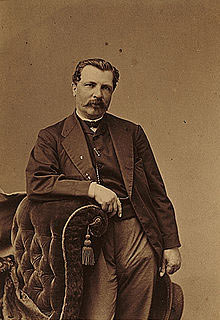
IVES, JAMES M. (1824-1895). Captain, 23rd Regiment, New York State National Guard, Company F, and partner in the lithographic print firm of Currier & Ives. Born in New York City, where his father was the superintendent of Bellevue Hospital, he married Nathaniel Currier’s sister-in-law in 1852, and soon went to work for Currier as his bookkeeper. Five years later he became Currier’s partner, and though he produced some drawings for the house, his primary impact was as its manager. In that position he demonstrated a shrewd understanding of popular taste and an eye for technical execution.
During the Civil War he organized Company F of the 23rd New York, was commissioned in on June 18, 1863, and served as its captain during the Confederate invasion of Pennsylvania in July of 1863. Immediately after the Battle of Gettysburg, he and his troops were called back to New York City to put down the draft riots raging there. He mustered out on July 22, 1863, at Brooklyn. He continued to work in his lithograph business until his death from heart disease. He last lived in Rye, New York. Section 53, lot 6801, grave 10.
IVES, SAMUEL J. (1842-1863). First lieutenant, 70th New York Infantry, Company H; second lieutenant, 2nd D.C. Infantry, Company H; private, 72nd New York Infantry, Company C. A native of New York, Ives enlisted at Brooklyn as a private on August 25, 1862, and mustered into the 72nd New York, also known as the 3rd Excelsior Regiment, on that day. He was transferred out on December 9, 1862, the same day he received a promotion to second lieutenant and was commissioned into the 70th New York, also known as the 1st Excelsior. Ives entered the 70th at Falmouth, Virginia, on February 1, 1863, and was engaged in the infamous Mud March, an attempt by Major General Ambrose Burnside to surprise Robert E. Lee’s troops across the Rappahannock River in Virginia that was doomed by rainstorms, on January 20-24, 1863. He was promoted to first lieutenant on July 15, 1863, took ill in December 1863 and was admitted to the Wolfe Street Army Hospital in Alexandria, Virginia, on December 4, 1863. On medical leave as of December 17, he died of typhoid fever while on furlough on December 28, 1863, at the St. Denis Hotel in New York City. His soldier history indicates that he also served in the 2nd D.C. Infantry but there are no details about that enrollment. Section 43, lot 806.
IVEY, WILLIAM (1842-1915). First lieutenant, 69th Regiment, New York State National Guard Artillery (also known as the 182nd New York Infantry), Companies D and K. According to his pension record, Ivey was born in New Orleans, Louisiana, on September 21, 1842, locating that date in a family bible. He stood 5′ 6″ with black hair and eyes and a dark complexion, and had a tattoo of a female on his left forearm. Ivey enlisted as a private at New York City on October 20, 1862, and mustered into Company D on November 17 as a corporal. (The 182nd New York was organized in 1862 from members of the 69th National Guard Artillery returning from their three month duty and received its official designation in March 1864.) From April through October 1863, he was detailed to the color guard. On May 14, 1863, he was promoted to sergeant, and on March 1, 1864, to first sergeant. On June 7, 1865, he was transferred to Company K and promoted to first lieutenant. He was discharged on July 15, 1865, at Munson’s Hill, Virginia. After the Civil War, he was employed as a clerk. In 1903, Ivey’s application for a pension was granted under certificate 1,069,502. As per his obituary in the New York Herald, he was a Freemason and a member of the John A. Dix Post #135 of the G.A.R.; members of both organizations were invited to his funeral. He last lived at 21 Grove Street in Manhattan. He died of asthenia and endocarditis. Section 2, lot 5499.
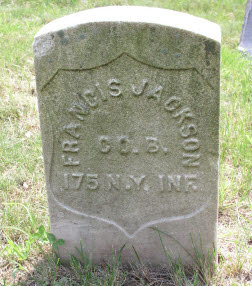
JACKSON, FRANCIS (1833-1903). Private, 175th New York Infantry, Company B. Born in Ireland, Jackson enlisted on October 29, 1862, at Southampton, New York, mustered in on January 17, 1863, and later transferred to the Navy. A resident of 354 Baltic Street, Brooklyn, he died of senility. Section 128, lot 31262, grave 164.
JACKSON, GEORGE (1822-1869). Private, 87th New York Infantry, Company D. Of English origin, he enlisted as a private on September 20, 1861, at Brooklyn. On October 12, 1861, he mustered into the 87th New York and was discharged for disability on October 6, 1862, at Fort Ellsworth in Alexandria, Virginia. His last residence was 1195 3rd Avenue in Manhattan. Section 189, lot 18563, grave 35.
JACKSON, ROLLIN C. (1818-1862). Captain, 106th New York Infantry, Company D. Jackson enlisted at Ogdensburgh, New York, on August 15, 1862, at the age of 44, and was commissioned into the 106th as a captain on August 27. He died of typhoid fever on December 15, 1862, at Piedmont, Virginia. Section 101, lot 4734.
JACKSON, SAMUEL R. (1841-1900). Private, 139th New York Infantry, Company C. Born in New York, Jackson enlisted at Brooklyn on September 4, 1862, and mustered into the 139th five days later. He served under the command of Colonel Anthony Conk and fought in Virginia, seeing action at Whittaker Mills, Williamsburg, and Petersburg, among other sites. He mustered out on June 19, 1865, at Richmond, Virginia. After the War, he worked as a laborer, then inherited a boot and shoe store from his father-in-law at 833 DeKalb Avenue in Brooklyn. He was a member of the G.A.R. and applied for and received an invalid pension in 1890, certificate 630,865. Jackson last resided at 603 DeKalb Avenue. In 2004, his descendants arranged for a government-issued tombstone at Green-Wood. Section 62, lot 6432, grave 14.
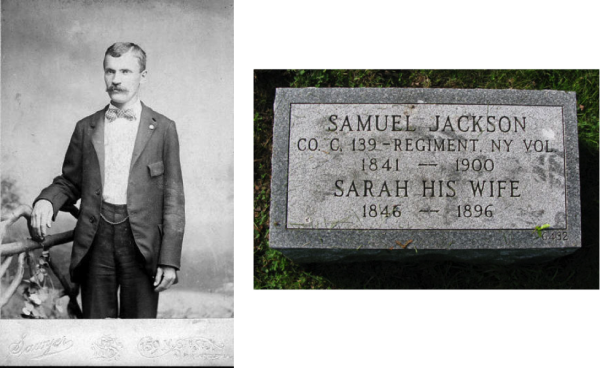

JACOBI, MARY CORINNA PUTNAM (1842-1906). Volunteer doctor and pediatrician. Jacobi was born in London, England, to American parents who were visiting the country that their ancestors had left for Massachusetts in the seventeenth century. Her father, George Palmer Putnam, was the founder of the publishing house that bore his name. In 1848, her family returned to the United States to live, and she was raised in the suburbs of New York City. Determined that science would be her career, she was the first female graduate of the New York College of Pharmacy in 1863, and received her M.D. degree the next year from the Female Medical College of Pennsylvania.
During the Civil War, she volunteered at soldiers’ hospitals in New York City, went to Louisiana in 1863 to treat her brother for malaria, and the next year went to South Carolina to care for her sister, who had contracted typhoid while teaching at a freedman’s school. Unhappy with the level of her medical training, she applied to the École de Médecine in Paris, and was admitted by the minister of public education despite the protests of faculty members who did not want a female student enrolled. When she graduated in 1871, with high honors, she was the first woman to receive a degree from that school. Her sojourn in Paris was marked by her journalism: she reported on French medical advances for the American Medical Record, French politics for Scribner’s Magazine, and contributed stories to Putnam’s Magazine and the New York Evening Post. Her letters were so well done that those which described the Franco-Prussian War and the turmoil in Paris in 1870 were published in the American Historical Review after her death.
Returning to New York City in 1871, she worked at Mount Sinai Hospital, and became the first professor of pediatrics in the country when she was hired by Columbia Medical School. A leader for women’s health and suffrage, Dr. Jacobi taught at the Women’s Medical College of the New York Infirmary, organized and was president (1874-1903) of the Association for the Advancement of the Medical Education of Women, and was a founder of the Working Women’s Society and the League for Political Education, an organization that advocated woman’s suffrage. With broad formal training, extensive clinical skills, and prolific published papers, she was the leading woman physician of her era. She was also in the forefront of early theories on the contribution of environmental factors to disease. Though she was a member of many medical societies, she was denied membership, ironically, in the Obstetrical Society. Her husband, Abraham Jacobi, for whom Jacobi Hospital in the Bronx is named and who is interred with her, is known as the “father of pediatrics.” She last lived at 19 East 47th Street in Manhattan. Section 61, lot 13850.
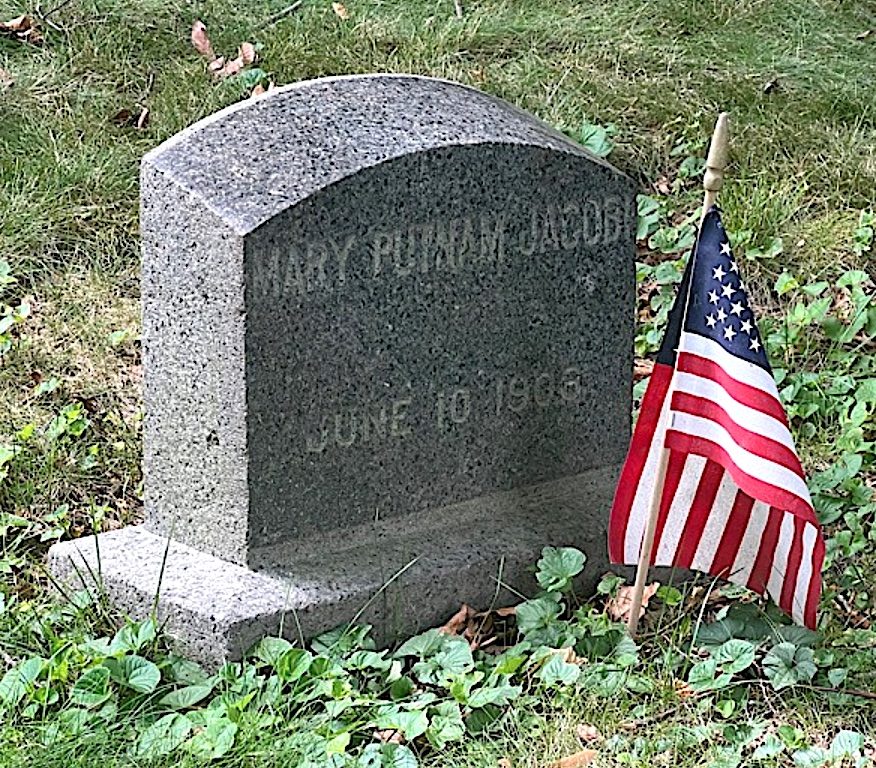
JACOBSON, ARTHUR C. (1845-1919). Sergeant, 176th New York Infantry, Company D; private, 71st Regiment, New York State National Guard, Company C. Of Russian birth, Jacobson enlisted for three months on May 28, 1862, at New York City, mustered into the 71st that day, and mustered out at New York City on September 2. He soon re-enlisted as a private at New York City on September 23, 1862, mustered into the 176th on December 12, and was promoted to corporal on February 28, 1863. Taken as a prisoner of war on June 23, 1863, at Brashear City, Louisiana, he was paroled and returned on August 17, 1863. He was promoted to sergeant on November 1, 1863, and was discharged on February 15, 1864, at Madisonville, Louisiana. In 1905, he applied for and was granted an invalid pension under certificate 1,115,209. His last residence was at 118 Lefferts Place in Brooklyn. Section 137, lot 26551.
JACOBUS, THOMAS L. (1824-1880). Private, 71st Regiment, New York State Militia, Company G. A native New Yorker, Jacobus served with the 71st Regiment when it was activated for three months in 1861. He last resided at 204 West 10th Street in Manhattan. He died from complications of a fracture. In 1880, Emeline Jacobus, who is interred with him, applied for and received a widow’s pension, certificate 349,262. Section 6, lot 33541.
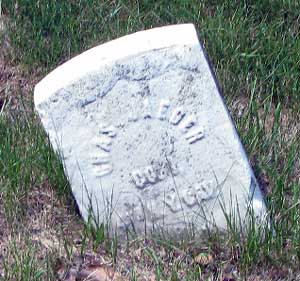
JAEGER, CHARLES G. (1835-1886). Private, 4th New York Cavalry, Company I. A German by birth, he enlisted as a private on December 4, 1861, mustered into the 4th New York Cavalry that day, and mustered out on November 25, 1864, at Kearnestown, Virginia. In 1880, he applied for an invalid pension, application 397,522, but there is no known certificate number. His last residence was 139 Avenue A in Manhattan. Charlotte Jaeger, his mother, received a pension in 1890, certificate 334,857. Section 126, lot 5047, grave 525.
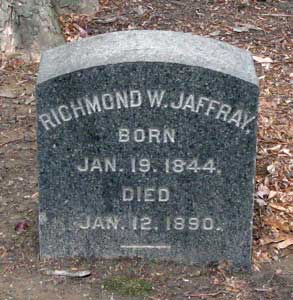
JAFFREY, RICHMOND W. (1844-1890). Second lieutenant, 6th New York Heavy Artillery, Companies D and E. Jaffray, who was born in New York State, enlisted at New York City as a second lieutenant on April 1, 1863, and was commissioned into Company D of the 6th New York Heavy Artillery on April 12. On October 30, 1863, he transferred intra-regimentally to Company E and resigned his commission on December 30, 1863. His last address was on Stevens Avenue in Mount Vernon, New York. Jaffrey died of pleurisy. Section 171, lot 12801.
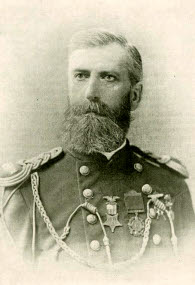
JAHN, GUSTAVE (or GUSTAV, GUSTAVUS) A. (1846-1906). Corporal, 13th Regiment, New York State National Guard, Company K. Jahn’s family immigrated to the Flatbush section of Brooklyn in 1856 from Saxony, Germany. A graduate of the city’s public schools, he was a banker on Wall Street at the start of the Civil War. During the War, he served with the rank of corporal in the 13th New York National Guard for 30 days in 1863. During his military service, he was on the staff of General Christiansen of the 13th and General McLeer, commander of the Second Brigade.
In 1866, Jahn started a sugar business, becoming a wealthy sugar and rice dealer. Active in many organizations, he was a member of the Lafayette Post #140 of the G.A.R., the Clinton Commandery, the Chamber of Commerce, the Hamilton Club, and was the founder of the Henry Street German Church. He lived at 1926 Albemarle Road in Brooklyn. His death was attributed to myocarditis. Section 155, lot 25741.
JAHN, HERMAN (or HERMANN) (1844-1909). Private, 41st New York Infantry, Company C; Veteran Reserve Corps. Born in Germany, Jahn enlisted and mustered into the 41st New York at New York City on June 6, 1861. He was wounded at the Battle of Second Bull Run, Virginia, on August 30, 1862, and was transferred into the Veteran Reserve Corps on September 30, 1863. In 1864, he received an invalid pension, certificate 34,646. His last address was 74 Bay 16th Street in Brooklyn. Section 60, lot 13565, grave 10.

JAHNE, MORTIMER HENRY (or JOHNS, MARTIN H.) (1839-1917). Captain’s clerk, United States Navy. A native of New York, he enlisted in the United States Navy and served on board the USS Tallapoosa from October 5, 1861, through November 15, 1862. Other details related to his service are unknown. As per his Draft Registration for Newark, New Jersey, in June 1863, he was employed as a jeweler.
Active in the Jersey City Yacht Club, Jahne served as its secretary in 1863 and 1864. His obituary in the New York Clipper states that he was a veteran actor who played the role of Simon Legree in several “Uncle Tom” companies before he became a noted Shakespearean actor whose stage name was Ned Clifton. According to the Brooklyn Directory of 1886, he was employed as a jeweler. The Veterans Census of 1890 confirms his military status. The census of 1900 indicates that he was also known as Martin H. Johns. In community life, he was active in “club, church and social circles.” He last lived at his son’s residence at 448 Hancock Street in Brooklyn, which according to an article in the New York Herald was a “handsome house.” The cause of his death was nephritis. Section 55, lot 6321.
JAMESON (or JAMMESON), ALEXANDER (1838-1906). Sergeant, 10th New York Infantry, Company F. A Brooklyn native, he enlisted there as a sergeant on April 26, 1861, mustered into the 10th New York four days later, and mustered out at New York City on May 7, 1863. In 1890, he filed for and received a pension, certificate 613,148. Jameson was a member of the G.A.R.’s Winchester Post #197 in Brooklyn. He last lived at 180 Adelphi Street, Brooklyn. He died from heart disease. His widow, Louisa Jameson, applied for and received a pension in 1910, certificate 610,811. Section 135, lot 27263, grave 1919.
JANSEN (or JANSSEN), JOHN A. (or ALBERT J.) (1843-1891). Private, 22nd Regiment, New York State National Guard, Company F. A native of Germany, Jansen enlisted at New York City as a private on May 28, 1862, mustered into the 22nd on that date, and mustered out after three months on September 5 at New York City. A member of the Grand Army of the Republic as of November 18, 1887, his name appeared on the G.A.R. Mortuary List as John A. Janssen. His last residence was 280 Ryerson Street in Brooklyn. Section E, lot 21349.
JARBOE, RALPH W. (1843-1879). Corporal, 102nd Regiment, New York State National Guard, Company A; private, 8th Regiment, New York State National Guard, Company K. Jarboe enlisted as a private on May 29, 1862, at New York City, and immediately mustered into the 8th Regiment. He mustered out after three months on September 10 at New York City. During 1864, he served for 100 days in the 102nd New York State National Guard, Company A, and was promoted to corporal during that time. A newspaper article indicates that Jarboe was a fireman after the Civil War, and suffered burns in a New York City fire at a West Street pier in 1868. His last residence was 110 Norman Avenue, Brooklyn. Phthisis was the cause of his death. Section B, lot 13575, grave 39.
JARBOE, VERNON (1837-1886). Private, 22nd Regiment, New York State National Guard, Company G. A native New Yorker, Jarboe served for 30 days with the 22nd New York National Guard in 1863. According to the 1880 census, he was employed as a hat tip pointer. He last lived at 157 East 81st Street in Manhattan; his death was attributed to phthisis. Section 146, lot 25456.

JARDINE, EDWARD (1828-1893). Brigadier general by brevet; lieutenant colonel, 17th New York Infantry; major, 9th New York Infantry, Company G, 89th New York Infantry; captain, Veteran Reserve Corps. Born in Brooklyn and orphaned at a young age, he went to school at night to pursue his education. A hardware importer, Jardine was 5′ 8″ tall, with a light complexion and gray eyes. A member of the 7th New York National Guard before the Civil War, he was versed in military matters before his enrollment. He enlisted at New York City on May 4, 1861, and mustered in as captain of Company G, 9th New York, a company which he helped recruit, on May 20. The 9th was informally known as Hawkin’s Zouaves. Jardine fought at Big Bethel, Virginia, and was on the expedition to Hatteras Inlet, North Carolina, where he was under heavy fire at Forts Hatteras and Clark in August 1861. He was commended by Major General Benjamin F. Butler in his report from the USS Minnesota on August 30, 1861, for his actions when he was left in command after the cutter Harriet Lane with Colonel Hawkins aboard was unable to land.
On February 14, 1862, Jardine was promoted to major and joined the regiment’s staff. Wounded in action at Camden, North Carolina, on April 19, 1862, he recovered in time to co-command the 89th New York in Maryland at the Battle of South Mountain on September 14, 1862, and at the Battle of Antietam three days later where he was praised for his coolness and gallantry by Colonel Harrison S. Fairchild. At Antietam Creek, he fought in water that reached his armpits and then was violently thrown when his horse was shot from under him. As per a memorial tribute by the Loyal Legion, the officers and soldiers of the 89th Regiment presented Jardine with a gold medal acknowledging their appreciation for his gallant services. Remaining with the 89th until October 24, 1862, he then rejoined the 9th and took part in the Battle of Fredericksburg, Virginia, in December 1862, and led his regiment at the siege and defense of Suffolk, Virginia, April 11-May 4, 1863. According to a testimonial in The Congressional Record (April 3, 1896), Jardine was injured numerous times during the War including the near severing of his left thumb, a piercing of his thigh and kidney by a ball, and an injury to his right shoulder. Promoted to lieutenant colonel on April 15, 1863, he was authorized on May 29, 1863, to reorganize the 9th, which had just mustered out after three years’ service.
In New York City to recruit for the new 9th, Jardine led his recruits and members of the 7th that he could muster (in total about 175 men) in an effort to put down the Draft Riots there during July of 1863, at the request of General Wool. His obituary in The New York Times reports that on July 15, 1863, he led his men to First Avenue and East 19th Street where the mob had centered. Outnumbered twenty to one, his men were forced back and many were left dead or wounded in the street. For his efforts, he was beaten by the mob and suffered a compound fracture to his thigh from a piece of lead pipe that was shot from a cannon. His comrades carried him to the basement of a nearby residence. However, the mob found him and told him they he was about to be killed–to say his final prayers. Jardine, though severely wounded, was able to talk his way out of this. On July 16, 1863, E. S. Sanford, in his report of the Draft Riots, wrote of Jardine’s injury and noted, “The mob were armed, organized, and fired at the word of command…” He transferred to the staff of the 17th New York Volunteer Infantry Regiment on October 17, 1863. The obituary goes on to say that Jardine was in line to be commissioned colonel of the 17th Regiment, a new organization of the old 9th and 17th Regiments that had adopted the uniform of the 9th Regiment. However, due to his incapacitation, he was discharged from his regiment in May 1864 and transferred into the Veteran Reserve Corps where he served as a captain for the rest of the War. On November 2, 1865, he was brevetted a brigadier general “for gallant and meritorious services.” He resigned on April 12, 1866.
Jardine relocated to Ft. Lee, New Jersey, in 1869 where he took an active interest in local politics including candidacies for elective office. From 1867 to 1869, he was the publisher and editor of the Daily Times of Jersey City and of the Bergen County Weekly Times. In 1869, he was clerk of the New Jersey Legislature. In 1870, President Ulysses S. Grant appointed him a weigher in the New York Custom House, a position that he held until his health prevented him from working. A leader of the Grand Army of the Republic, he served as Department of New Jersey commander from 1867 to 1868, then joined New York’s G.A.R. Post #103 (George Washington), served as Department of New York commander in 1874, and was national senior vice commander in 1875. Post #25 of the G.A.R., in New York County, was established in 1874 and named in his honor. He was granted an invalid pension in 1874. In 1888, Dr. G. H. Humphrey petitioned successfully in support of a Congressional private bill to increase Jardine’s pension to $50 a month, a sum which the Pension Bureau could not do without specific authorization. Dr. Humphrey who served with Jardine in the 9th New York and treated him from time to time, wrote about the effects of Jardine’s wound that disabled him on July 15, 1863:
…General Jardine, while in command of troops engaged in suppression of the riots, was wounded in action, suffering a compound gunshot fracture of the left thigh bone and its upper third. This wound crippled him for life. After about a year of great pain and peril he so far recovered as to get about on crutches with a badly deformed and useless limb. But the wound has repeatedly broken out afresh, and during the past 25 years he has again and again undergone the greatest pain and danger to his life with extensive abscess; that during the past 10 months he has been confined to his bed owing to one of these attacks, the result of a fall, which for the third time refractured his tender, badly irritated limb, and during a portion of this time his life has been in the utmost danger from septic blood poisoning.
He is at present confined absolutely to his bed or reclining chair, quite unable to move from place to place without great assistance, or to dress himself, or to serve himself in any of the ordinary functions of life, unable to sit in a natural attitude owing to stiffening of the left hip joint, and moreover, liable at any time to a recurrence of the dangerous inflammations which so often have threatened to kill him….
According to records in Jardine’s pension file, his shattered left leg was six inches shorter than his right leg. He died at the Hotel Pomeroy in New York City after enduring nine operations on his thigh after July of 1863, the last of which was in October 1892. As per his obituary, which confirms his service during the Civil War, he was a Freemason and member of the Loyal Legion, a patriotic organization; members of those groups and his comrades from the Washington Post of the G.A.R. were invited to attend his funeral. His wife Catherine received a pension, certificate 396,914. A bill was enacted and noted in The Congressional Record (April 3, 1896) that Catherine Jardine’s name be added to the pension roll at the rate of $100 per month. A list of Edward Jardine’s achievements during the War was enumerated in that document. Section 159, lot 15334.
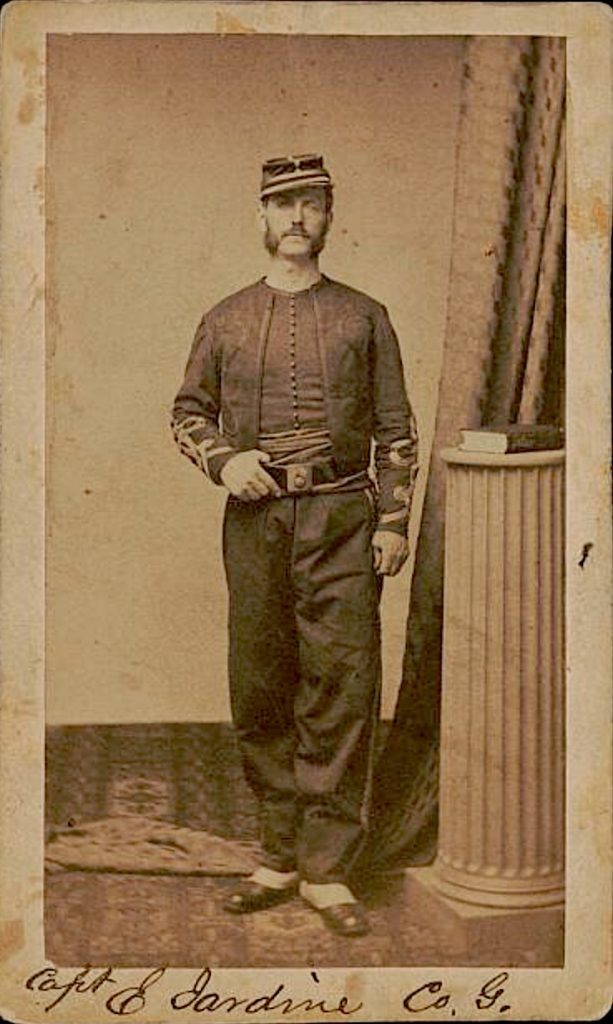
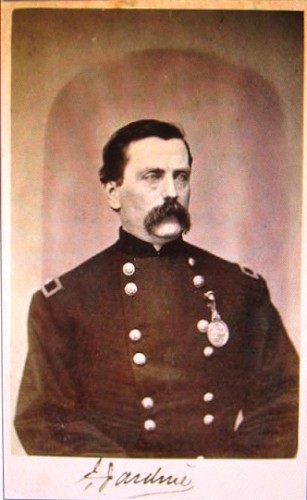
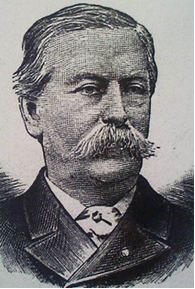
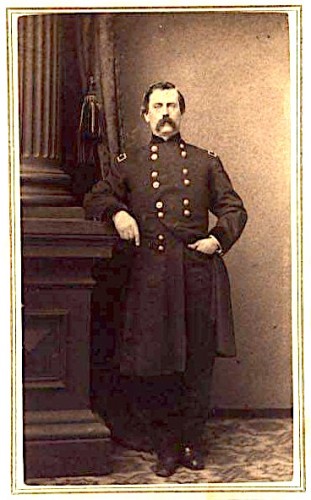

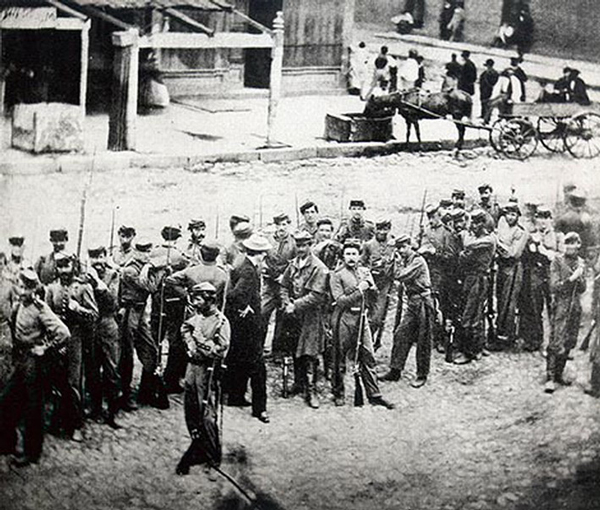
JARRARD, WILLIAM (1844-1891). Private, 12th Regiment, New York State Militia, Company D. Jarrard served for three months with the 12th New York State Militia in 1862. He last lived at 204½ 22nd Street in Brooklyn. He died of heart disease. Section 64, lot 571.
JARVIS, GEORGE W. (1842-1870). Private, 82nd New York Infantry, Company E. A native of New York State, Jarvis enlisted as a private on May 16, 1861, at New York City. On that date, he mustered into the 82nd New York. He deserted on September 10, 1862, at Monocacy, Maryland. His last address was 137 4th Street, Brooklyn. Consumption was the cause of his death. Section 175, lot 18233.
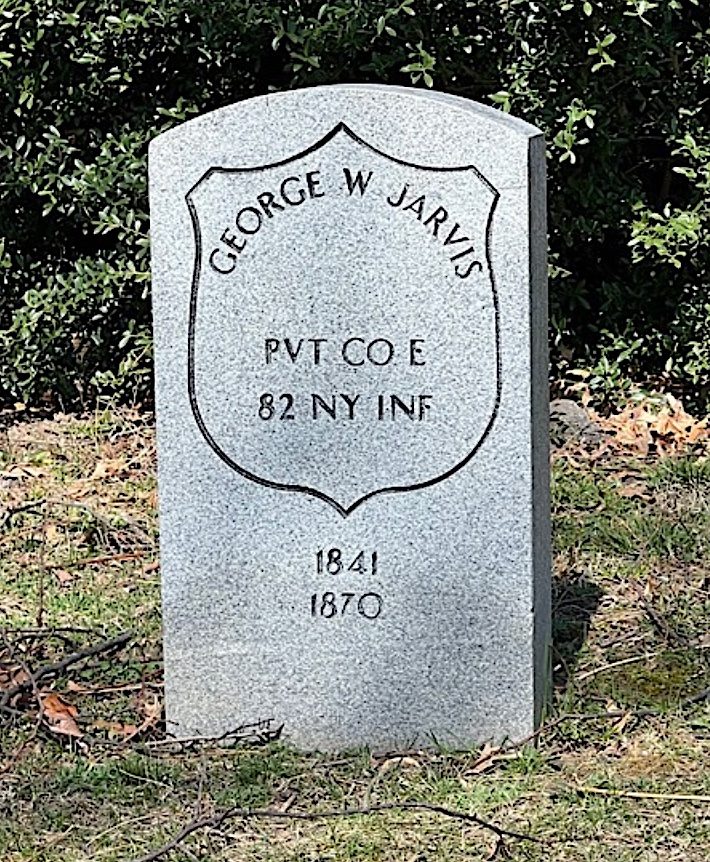
JAUNCEY, JAMES (1840-1867). Private, 84th New York (14th Brooklyn) Infantry, Company B. Born in New York, Jauncey enlisted at Brooklyn as a private on September 5, 1862, and mustered into the 14th Brooklyn the next day. On July 1, 1863, he was wounded in action on the first day of combat at the Battle of Gettysburg, Pennsylvania. He was discharged for wounds on April 12, 1864, at David’s Island in New York Harbor. He last lived at 635 Broadway in New York City. Section 100, lot 678.
JAUNCEY, JAMES L. (1839-1867). Unknown rank, 8th New York Infantry, Company E. A native of Connecticut, he enlisted in the 8th New York on July 10, 1861, and mustered into Company E on that date. No other information is available about his service. He last lived at 69 East 40th Street in New York City. Section 116, lot 8964.
JEFFCOTT, JOSEPH (1839-1866). Sergeant, 176th New York Infantry, Company G. Born in New York City, Jeffcott enlisted there as a private on September 11, 1862. On December 18, he mustered into Company G of the 176th New York. On September 7, 1864, he re-enlisted in the 176th and was promoted to sergeant on September 16. He mustered out at New York City on October 10, 1865. He last resided in Manhattan where he lived on Centre Street. Section 167, lot 17067.
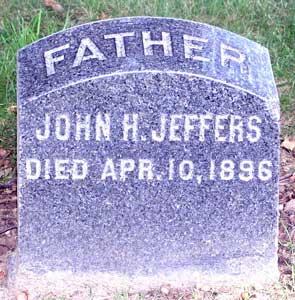
JEFFERS, JOHN H. (1846-1896). Private, 56th Regiment, New York State National Guard, Company E. After enlisting as a private at Brooklyn on July 11, 1864, Jeffers, a native of New York City, served 100 days of guard duty at Elmira, New York, where he mustered out at the expiration of his enlistment on November 6. Active in the Henry M. Lee Post #21 of the G.A.R., he joined on February 14, 1878, and held numerous offices including sergeant major. The G.A.R. Annual of 1897 confirms his service in the 56th Regiment. Jeffers last lived at 1068 Hancock Street in Brooklyn. His death was attributed to a skull fracture. Section 185, lot 25653, grave 12.
JELLISON, JOHN D. (1840-1862). Private, 51st New York Infantry, Company G. According to the 1850 census, Jellison was living with his mother in Hancock County, Maine, the state where he was born, and in the 1860 census, he was living in Brooklyn. Jellison enlisted as a private at Brooklyn on August 17, 1861, and mustered into the 51st New York on September 12. Cemetery records indicate he died of a gunshot wound on April 30, 1862, at Mill Springs, North Carolina; however, other records note that he died of disease on that date. In 1870, his mother, Julia Jellison, applied for a pension which was granted, certificate 157,075. Section 83, lot 1283.

JENKINS, JOHN (or JEREMIAH) HALSEY (1839-1915). Corporal, 1st New York Mounted Rifles, Company A. A native of New York City, he enlisted there as a private on July 22, 1861, and mustered into the 1st New York Mounted Rifles on August 31. On July 10, 1863, he was promoted to the rank of corporal in his company and mustered out on July 22, 1864, at Bermuda Hundred, Virginia. His last residence was 22 Marcy Avenue, Brooklyn. His gravestone confirms his Civil War service. Section 34, lot 5432.
JENKINS, THEODORE S. (1845-1928). Private, 16th Pennsylvania Cavalry, Company I. Jenkins, a native of Pennsylvania, enlisted as a private on March 6, 1865, mustered into Company I of the 16th Pennsylvania Cavalry Regiment, and mustered out on August 11, 1865, at Richmond, Virginia. In 1890, he applied for an invalid pension that was granted under certificate 1,135,431. His last address was 2122 Ditmas Avenue in Brooklyn. Shortly after his death in 1928, Maude Jenkins applied for and received a widow’s pension, certificate a-1-10-29. Section 204, lot 28291.
JENNESS, GEORGE A. (1846-1916). Corporal, 9th New Hampshire Infantry, Company D. Jenness, who was born in Gonic, New Hampshire, enlisted as a 15-year-old private on June 6, 1862, at Dover, New Hampshire. He mustered into Company D of the 9th New Hampshire on July 26 and was promoted to corporal of his company at some point. On May 12, 1864, he was taken as a prisoner of war at Spotsylvania Court House, Virginia, and transported to the infamous Camp Sumter at Andersonville, Georgia. On May 24, 1865, he was discharged from military service at Philadelphia, Pennsylvania. His application for an invalid pension on June 5, 1865, was granted under certificate 1,143,526. According to his obituary in The New York Times, he was a well-known Brooklynite who was in the dry goods business. His last residence was 1740 St. John’s Place in Brooklyn. The cause of his death was nephritis. Section 128, lot 32688, grave 2.
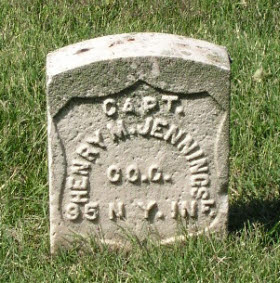
JENNINGS, HENRY M. (1840-1915). Captain, 95th New York Infantry, Company C; corporal, 71st Regiment, New York State Militia, Company A. After enlisting on April 19, 1861, he mustered into the 71st State Militia from May 3-July 31, 1861. He re-enlisted as a first lieutenant at New York City on December 23, 1861, and was commissioned into the 95th New York on April 29, 1862. Jennings commanded his unit in Virginia at the Battles of Weldon Railroad and Polar Springs Church, turned down a promotion to major late in 1864, and resigned his commission. He was discharged on December 26, 1864.
In 1879, Jennings applied for and was granted an invalid pension, certificate 193,014. His last residence was on Morris Avenue in the Bronx. As per his obituary in the New York Herald, members of the 71st Veterans were requested to attend funeral services at the Armory on Park Avenue and 34th Street in Manhattan. He died of a duodenal ulcer. His widow, Frances Jennings, applied for and received a pension in 1915, certificate 802,044. Section 62, lot 3152.
JENNINGS, THOMAS (1845-1917). Private, 25th New York Cavalry. Born in New York City, he enlisted there as a private and mustered into the 25th New York Cavalry on August 27, 1864. Other details about his service are not known. He last lived in Hopewell, New Jersey. His death was caused by an obstruction of the bowels. Section H, lot 7047.
JENNINGS, WALES R. (1843-1890). Private, 15th Connecticut Infantry, Company F. According to the Civil War Registration Records, Jennings was a farmer living at Quakers Farms when he entered service. After enlisting as a private on September 17, 1864, at Oxford, Connecticut, he mustered immediately into Company F of the 15th Connecticut Infantry, and mustered out on June 27, 1865. As per the 1890 Brooklyn Directory, he was employed as a hatter. His last residence was 160 Hall Street in Brooklyn. Shortly after his death caused by peritonitis in 1890, Alice Jennings applied for and received a widow’s pension, certificate 332,517. Section 206, lot 21347, grave 585.
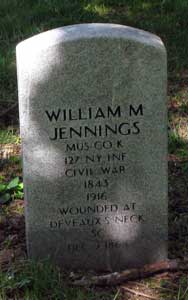
JENNINGS, WILLIAM M. (1843-1916). Musician, 127th New York Infantry, Company K. Of Irish birth, he enlisted as a private on August 22, 1862, mustered in the next month on September 8, and was promoted to musician on April 1, 1863. After being wounded at the Battle of Deveaux’s Neck, South Carolina, on December 9, 1864, he returned to his regiment until it mustered out on June 30, 1865, at Charleston, South Carolina. His last residence was in Port Chester, New York. His death was attributed to mitral regurgitation. Section 171, lot 12455.
JENSEN, NIELS A. (1837-1916). Musician, 6th United States Infantry, Companies B and C. A native of Synn, Denmark, Jensen enlisted as a private on an unknown date, and served as a musician in the 6th U.S. Infantry, Regular Army, in Companies B and C. He also served as a musician in the West Point (U.S. Military Academy) Band. As per his obituary in the Brooklyn Daily Eagle, he lived in Brooklyn for forty-five years and was the proprietor of a carpet cleaning business there. He last resided at 449 Rutland Road in Brooklyn. He died of arteriosclerosis. Section 122, lot 17806, grave 165.
JEPSON, HENRY E. (1846-1913). Third class boy, United States Navy. Jepson was born in Orange, New Jersey. According to the Return of the Naval Rendezvous at New York for September 23, 1865, he enlisted that week until the age of 21 as a third class boy having previously served one year in the Navy. He was 17 years and nine months old at the time of this second enlistment. A clerk, he was 5′ 5¼” tall with hazel eyes, brown hair and a fair complexion. He had a tattoo of a crucifix on his left arm. He served in the North Atlantic squadron aboard the USS Shamrock and then served on the USS Sabine. Jepson’s pension index record notes that he also served on the USS North Carolina and the USS Vermont during the Civil War and had additional service in the United States Marine Corps.
The 1880 census reports that he was living in East Orange, New Jersey and working as a clerk in a store. The 1890 and 1900 directories for Newark, New Jersey, list Jepson as manager of R. G. Dun & Co. at 768 Broad Street. The 1890 Veterans Schedule confirms his Civil War service in the Navy from 1862 until resignation in 1869. He received a pension from the Navy, certificate 40,489. Jepson last lived in East Orange, New Jersey. Shortly after his death, Susan L. Jepson, who is interred with him, applied for and received a widow’s pension from the Navy, certificate 760,180. Section 150, lot 15993.
JEROME, LEONARD W. (1845-1898). Private, 24th New York Cavalry, Company F. A native of Brooklyn, Jerome enlisted at New York City as a private on March 31, 1865, mustered into the 24th New York Cavalry, and mustered out on June 17 at Cloud’s Mills, Virginia. He last resided in Morris Park, Long Island, and died after losing both legs in a train accident. An article in The New York Times a day after the accident stated that he had recently inherited an estate worth $25,000 after his wife died, was living extravagantly, and in spite of a promise to reform had wandered onto the railroad tracks in Woodhaven where he was struck by the approaching train. Note: This is not the same Leonard Walter Jerome who was the father of Lady Randolph Churchill and the grandfather of Winston Churchill. That Leonard W. Jerome (see), also interred at Green-Wood, died in 1891. Section 194, lot 29632.
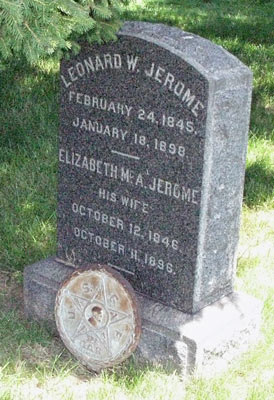
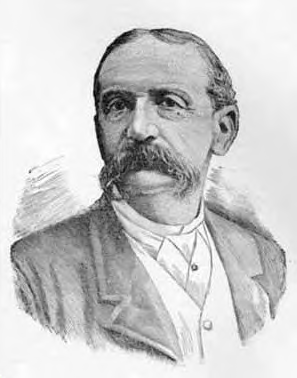
JEROME, LEONARD WALTER (1817-1891). Civil War fundraiser and grandfather of Winston Churchill. Born in Pompey, New York, he was a graduate of Union College. After setting up a law practice in Rochester, New York, he relocated to New York City where he was a stock speculator and promoter. A flamboyant and prominent figure, he was sometimes called “The King of Wall Street.” During the New York City Draft Riots of July 1863, he defended the New York Times Building with a Gatling gun. Jerome, who had an investment in The Times, was a contributing editor and like the editorial board, was staunchly pro-Union. An article in the paper after the Riots by John Swinton credits Jerome for his valor and says in part:
“…I recall Mr. Jerome, tall and mettlesome, proud-looking, and with power in his face, standing by the battery, ready for action, and waiting for the approach of the rioters. Ruffians were lurking about; a gang of them could be seen near the upper end of City Hall Park, some more at the head of Frankfort Street, and others in Spruce Street. Calmly and alone stood Leonard Jerome by his death-dealing machines and about which plenty of terrifying stories had been told. He was a gallant friend of the editor of The Times, in defense of whom he risked his life, in defense also of the Government of the United States, against which the rioters had risen. There was something like majesty in his mien, and in the tableau in front of The Times Building. Were I an artist, I would paint the scene as I then beheld it, and as it yet exists in my memory…. ”
The rioters were scared off by the sight of the Gatling guns and he did not fire a shot. He founded the Riot Relief Fund after the Draft Riots to help the families of the 101 police, 16 militia, and seven fire fighters who were killed or injured defending the Union. Out of the $54,980 raised, $22,721.53 was distributed in amounts ranging from $50 to $1,000 and the rest was invested to meet future emergencies. A patron of the arts, he founded the Academy of Music, an opera house in New York City. An avid yachtsman and sports enthusiast, he also founded the American Jockey Club and the Jerome Park Racetrack and in 1884, the Sheepshead Bay Racetrack. Jerome Avenue in the Bronx is named for him. He died in Brighton, England. His daughter, Jennie Jerome, was the mother of Winston Churchill. Section 37, lot 14234.
JESSUP, JOHN (1845-1920). Private, 42nd New York Infantry, Company K; 82nd New York Infantry, Company E; 59th New York Infantry, Company I. Born in New York, Jessup enlisted at Brooklyn as a private on August 28, 1863, and mustered that day into the 42nd New York. He was transferred into the 82nd New York on June 28, 1864, and a month later, on July 10, joined the 59th New York. His last address was 7 Groton Street in Flushing, New York. Section 111, lot 12773.
JEWETT, ORVILLE D. (1838-1877). Captain, 156th New York Infantry, Company I. After Jewett enlisted on August 20, 1862, at Albany, New York, as a first lieutenant, he was immediately commissioned into the 156th New York. He was promoted to captain of his company on November 14, 1862, and was discharged on March 26, 1864. According to articles in The New York Times and New York Herald in April 1877, Orville Jewett used a grenade and carried an arsenal of weapons (two pistols and a knife) when he killed his uncle, George Jewett, and wounded another relative in their family’s oil and paint business on Front Street in Manhattan. As indicated by the reports, Orville was a lackadaisical worker who was not an asset to the business. As per an April 7, 1877, article, he entered the office, threw the grenade which killed his uncle, then when the two of them were on the floor, Orville shot himself four times with his pistol. He last lived in Orange, New Jersey. Section 102, lot 4312.
JIMMERSON, FERDINAND A. (1837-1898). Private, 12th Regiment, New York State Militia, Company H. A native New Yorker, he enrolled there on April 20, 1861, mustered into the 12th Regiment on June 4 at Washington, D.C., and was discharged on August 5 at New York City. According to a descendant, he was given one pair of pants and one pair of shoes at the time he mustered. After the War, he was a member of the Henry M. Lee Post #21 of the G.A.R. and held leadership positions in that organization. In 1891, his application for an invalid pension was granted, certificate 916,831. He was likely a brother of Robert Jimmerson (see). He died of valvular heart disease. Emma A. Jimmerson, who is interred with him, received a widow’s pension in 1898, certificate 504,657. Section 80, lot 3769.
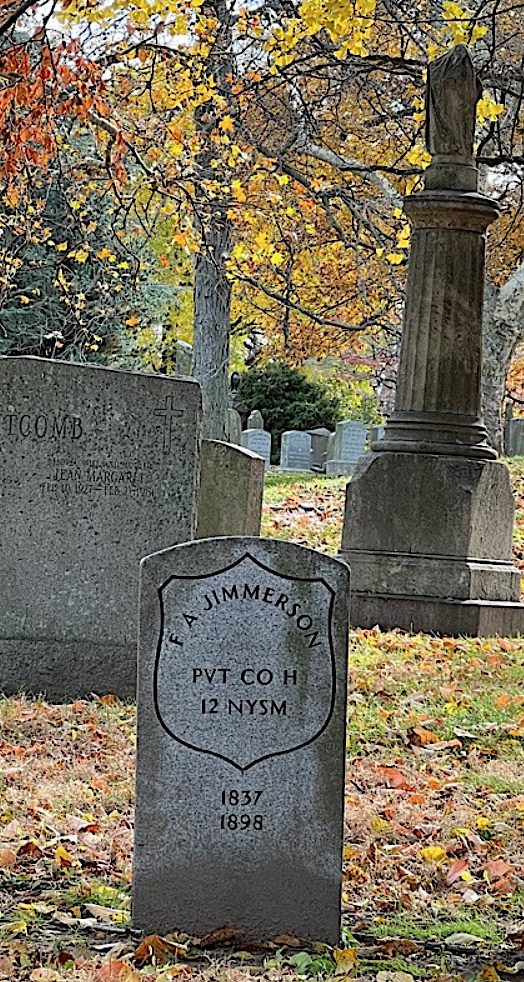
JIMMERSON, ROBERT MacCUTCHEON (1841-1895). Corporal, 12th Regiment, New York State National Guard, Company C. Born in Dutchess County, New York, he mustered into the 12th National Guard on June 1, 1863, and was discharged with his company after 30 days on July 20. His death in 1895 was caused by enteritis. He was likely a brother of Ferdinand Jimmerson (see). Section 80, lot 3769.
JOACHIM (or JOACHIN), CHARLES (1842-1891). Private, 6th New York Infantry, Company H. After enlisting as a private at New York City on May 22, 1861, Joachim, who was born in Germany, mustered into the 6th New York three days later, and mustered out at New York City on June 25, 1863. He last lived in the New Utrecht section of Brooklyn on 67th Street. Typhoid fever claimed his life. Mary Joachim, who is interred with him, received a widow’s pension in 1891, certificate 357,405. Section 135, lot 27263, grave 1416.
JOACHIM, CHARLES (1843-1863). Second lieutenant, 15th New York Heavy Artillery, Companies D, G, and C. Joachim, the son of Conrad Joachim (see), enlisted as a private on March 1, 1862, at Fort Marcy, Virginia, and mustered into Company D of the 15th Heavy Artillery. He received two promotions, to sergeant on July 1, 1863, with Company G, and to second lieutenant on September 8, 1863, effective upon his transfer to Company C. Joachim was promoted to second lieutenant by Max Von Bosch (see) who later married Louise Joachim, Conrad’s sister and Charles’s aunt. He died of asthenia (weakness) exactly one month later at Fort Lyon, Virginia, and was buried at Green-Wood on October 14 in the same grave as his father. Their gravestone, a marble book, was excavated in 2006. Section 115, lot 13536 (Soldiers’ Lot), grave 31.
JOACHIM, CONRAD (1817-1862). Assistant surgeon, 15th New York Heavy Artillery. A native of Germany, Joachim lived with his family in Wilkes Barre, Pennsylvania, in 1860. He had moved to Greenwich Street in Manhattan when he enlisted as an assistant surgeon at Washington, D.C., on May 13, 1862, and was commissioned into the Field and Staff of the 15th Heavy Artillery. According to an affidavit of the quartermaster of the 15th, “on or about the 26th day of August 1862 the said assistant surgeon Conrad Joachim in the line of duty, viz., while riding from Fort Ward to Fort Worth for the purpose of visiting invalid patients of the Battalion at different garrisons within the defenses of Washington, his horse fell and in the accident broke the right arm of said surgeon Joachim, who was subsequently transferred to the U.S. General Hospital, 14th Street, Washington, D.C., where his arm was amputated, and that about two hours after the operation, he . . . died at the hospital aforesaid.” Charles Joachim (see), his son, is buried in the same grave. His sister, Louise, married Max Von Bosch (see) in November 1864. Section 115, lot 13536 (Soldiers’ Lot), grave 31.
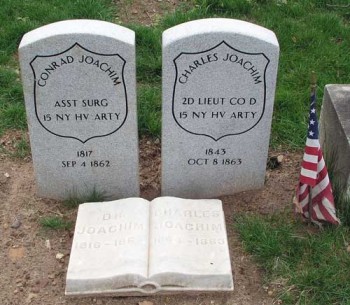
JOACHIM, WILLIAM (1824-1886). Corporal, Enfans Perdus New York Infantry, Company C. After Joachim enlisted as a corporal on November 10, 1861, at New York City, he mustered into Company C of the Enfans Perdus three days later. He was discharged for disability on October 26, 1863, at Morris Island, South Carolina. His last residence was 406 East 113th Street in Manhattan. His death was attributed to dropsy. In 1888, his wife applied for a widow’s pension that was granted under certificate 274,378. Section A, lot 8100.

JOBLING, JOHN (1843-1893). Seaman, United States Navy. Jobling was born in England. During the Civil War, he enlisted as a seaman in the United States Navy on October 10, 1864 and served aboard the USS Powhatan. The Powhatan participated in the capture of Fort Fisher in December 1864-January 1865. He was honorably discharged on August 24, 1865.
On October 4, 1888, Jobling mustered into the Michael W. Wall Post #623 of the G.A.R.; at that time, he was a seaman who lived at 322 Monroe Street in New York City. On February 9, 1892, his application for an invalid pension was rejected because no notable disability was observed; he claimed to be in failing health with a wounded left arm, chills and fever. Jobling’s death certificate notes that he was married and worked as a laborer. He last lived at 326 Delancey Street in Manhattan. His death was attributed to pneumonia. In 1897, Emma Jobling applied for a widow’s pension, application 14,046, but there is no evidence that it was certified. Correspondence with the pension bureau indicates that she used both the name Emma and Margaret and had moved; requests were made for correct name and address before her application could be considered. Section 1/ 2, lot 5499, grave 1830.
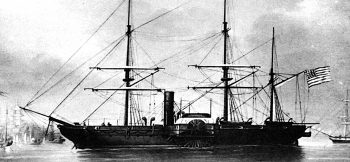
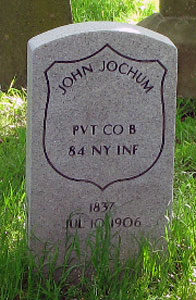
JOCHUM, JOHN (1837-1906). Private, 84th New York (14th Brooklyn) Infantry, Company B; 5th New York Veteran Infantry, Company I. Born in Germany, Jochum enlisted as a private at Brooklyn on August 20, 1862, and mustered into the 14th Brooklyn the next day. He was wounded at the Battle of Gettysburg, Pennsylvania, on July 1, 1863, transferred into the 5th New York Veterans on June 2, 1864, and was discharged for disability a month later on July 25. He last lived at 213 Willis Avenue in the Bronx. His death was caused by pneumonia. Section 183, lot 19296, grave 3.
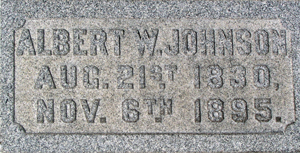
JOHNSON, ALBERT W. (1830-1895). Colonel, Johnson’s Arkansas Regiment Infantry, Confederate States of America. Born in Scott County, Kentucky, his uncle was Richard M. Johnson, Martin Van Buren’s vice president. His father, General William Johnson, was a West Point graduate, and member of the Kentucky legislature from 1830-1849. Before the Civil War broke out, Albert Johnson lived in Georgetown, Kentucky, during the summer and on a plantation in Arkansas in the winter where he was a wealthy cotton farmer and slave owner.
During the Civil War, he was a member of an Arkansas Regiment known as Johnson’s and later Cocke’s Regiment of the Arkansas Infantry. On November 14, 1863, he asked to return to General Preston’s district in Eastern Tennessee and Southwest Virginia where he was on special topographical duty as an engineer. That same month, a letter was sent to Jefferson Davis by Charles B. Mitchel asking that Johnson’s name be placed as judge advocate in the military court of Western Virginia, a position that had been vacant for several months. The recommendation said in part, “He has been in service in that region for some time. He is a man of marked character & ability-has been in service from the beginning of the war-is a man of family-was a man of large fortune-has lost it all by the enemy on the banks of the Mississippi in Arkansas-has a regular military education-& has in eminent degree those higher qualities that mark the true soldier & thorough gentleman.” On February 17, 1864, he received an appointment as captain of cavalry with an assignment as judge advocate to General E. Kirby Smith. On March 26, however, he declined the appointment stating that he has been assigned to the Engineer Department with “an implied promise of future promotion in a sphere which will be more congenial and will enable me to render more efficient aid to the service.” According to his obituary in The New York Times, he was with General Early during the raid on Washington, D.C. (July 1864).
Penniless after the Civil War, Johnson joined his son Tom in the railroad business, went on to be superintendent of the Street Railways in Indianapolis, and police chief in Louisville, Kentucky, a position that his son assumed after he resigned. Then, together with his son, Johnson started a business controlling street railways in many cities. He was involved in the tramways in London, England, and his family was active in expanding Brooklyn’s street transportation, developing Brooklyn’s Nassau system which was later absorbed by the Brooklyn Rapid Transit Company. After retiring, he moved to a mansion on Shore Road in Brooklyn. He was the father of progressive leader Tom L. Johnson, who served several terms as mayor of Cleveland, Ohio. He died of asthenia (weakness) at his son’s home in Cleveland. Section P, lot 29251.
JOHNSON, ALONZO W. (1845-1871). Second lieutenant, 139th New York Infantry, Companies G and D. Johnson enlisted as a private at Brooklyn, his birthplace, on August 16, 1862, and mustered into Company G of the 139th New York as a sergeant on September 9. On January 18, 1863, he transferred to the Field and Staff with a promotion to sergeant major, and on March 7, 1864, transferred back to Company D with a promotion to second lieutenant. Johnson was wounded in action on June 3, 1864, at Cold Harbor, Virginia, and was discharged for disability from wounds on August 29, 1864. He last lived at 44 Adelphi Street in Brooklyn. His death was attributed to congestion of the brain. Section 71, lot 9425.
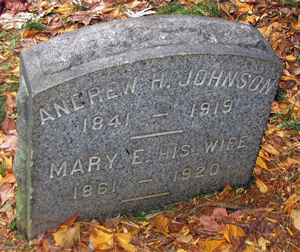
JOHNSON, ANDREW H. (1841-1919). Musician, 67th New York Infantry, Company A; drummer, 13th Regiment, New York State National Guard, Companies G and K. After enlisting at Brooklyn as a musician on May 14, 1861, Johnson mustered into the 67th New York on June 20, and was discharged on October 8. He re-enlisted as a drummer on May 28, 1862, mustered into Company G of the 13th Regiment, and mustered out at Brooklyn after three months on September 12. In 1863, he returned to the 13th Regiment, but to Company K as a drummer, and mustered out after 30 days. In 1897, he was awarded a pension, certificate 1,178,016. His last address was 28 Van Drypen Street in Jersey City, New Jersey. He succumbed to a brain tumor. Mary Johnson, his widow, who is interred with him, received a pension in 1919, certificate 881,773. Section 204, lot 31578, graves 1-5.
JOHNSON, BRADISH (1811-1893). Sugar and distillery magnate. Johnson was born on April 22, 1811 on a sugar plantation 40 miles south of New Orleans in Plaquemines Parish, Louisiana. The land was purchased in 1795 by his father, William M. Johnson, one of America’s first river boat pilots and a partner, George Bradish, who both hailed from Nova Scotia. In the 1830s, William Johnson moved his family to a new plantation just four miles away, which he named Woodland. In Bradish Johnson’s obituary in The New York Times, Woodland was said to be one of the most famous sugar plantations in Louisiana.
Bradish Johnson, named for his father’s partner, was a graduate of Columbia College, class of 1831. Although he had an interest in law and had been admitted to the bar, he joined his aging father in the William M. Johnson & Sons distillery business in New York City. The distillery, founded circa 1820, was located on 17th Street between Ninth and Tenth Avenues. Johnson’s papers indicate that the distillery produced whiskey and later brewed beer. On October 7, 1836, he married Louisa Anna Lawrence, the granddaughter of Jonathan Lawrence, an active supporter of New York patriots during the American Revolution. Ultimately, the couple had ten children. New York Episcopal Church records note the births of their second and third children in 1839 and 1841. In 1844, Johnson became a director of the Chemical Bank of New York when it was re-chartered. He remained a director there for twenty years. The 1850 census reports that Johnson and Louisa lived in Islip, New York, with their five children aged 3, 5, 7, 9, 11 and 13, their servants and their families. His real estate was valued at $4,500.
After his father’s death, Bradish Johnson continued the business with Moses Lazarus (the father of Emma Lazarus, whose poem “The New Colossus,” adorns on the base of the Statue of Liberty.) He renamed the enterprise Johnson & Lazarus. The firm sold refuse from the distillery as feed for cows and was the subject of an exposé in Frank Leslie’s Illustrated Newspaper in 1858. The newspaper reported that Johnson and other distilleries sold altered milk, called “swill milk,” to the public. As Johnson’s papers, which are archived in the Museum of the City of New York, assert, the exposé did not hurt the firm but led to the first food safety laws. Other sources indicate that Johnson was associated with Tammany Hall politicians who worked to defend the distillers. Johnson also established a sugar refinery which was the first to use centrifugal machines in the manufacture of sugar. Following in his father’s footsteps, Johnson also made significant investments in New York real estate.
Johnson inherited Woodland Plantation from one of his brothers before the Civil War. Thereafter he spent time each year in both New York and Louisiana. He was in Louisiana at the outbreak of the Civil War. His New York Times obituary states that Johnson “became convinced of the justice of freeing the slaves, and before the Emancipation Proclamation was issued he called his slaves together and told them that henceforth they were free.” It goes on to say that Johnson offered the freedmen from his plantation passage and subsistence in Africa. “But” the obituary asserts “the negroes begged to be allowed to be stay where they had been born. He consented.” However, commentary on his papers at the Museum of the City of New York question this claim and note that several sources contend that the slaves on Johnson’s Louisiana plantations endured poor living conditions. In Emma Lazarus in Her World: Life and Letters, author Bette Roth Young writes that the Union Army’s Office of Negro Labor visited the plantation in 1863. It reported that the overseer was referred to as a “devil” who “unfairly curtailed” rations and was lecherous toward the women. (Existence of the “Office of Negro Labor” could not be independently corroborated for this biography.)
A profile that appears on the website of the Bradish Johnson Company, Ltd. notes that when New Orleans was captured as of May 1862, Johnson raised the Union flag on his plantation where it remained for the rest of the Civil War. In 1863, Johnson joined with a group of businessmen who had interests in the South to form the Conservative Unionists. The group urged Louisiana to rejoin the Union under the provisions of its 1852 constitution, claiming that secession was illegal and that the state constitution had not been dissolved. They argued that the President should allow Louisiana back into the Union with slavery intact. Johnson and two other plantation owners wrote to Abraham Lincoln and reiterated their argument in a personal visit to the White House. Lincoln dismissed the idea in writing, “I do not perceive how such committal could facilitate our military operations in Louisiana, I really apprehend it might be so used as to embarrass them.” Stephen Whitney Lindsay, a descendant of Johnson’s, in his online biography (2008) of his great-great-great grandfather, adds that Lincoln replied that “a respectable portion of the Louisiana people desire to amend their State constitution.”
In 1863, Johnson brought suit against Union General Neal S. Dow of the 13th Maine Regiment claiming that in 1862, the Union Army occupied Woodland Plantation and took from that property 25 hogsheads of sugar, plundered the residence and took one silver pitcher, a half dozen each of silver knives, silver spoons and teaspoons and one fish knife among other articles. Johnson indicated that he was a loyal Union citizen, living in New York, who had been robbed by the Union Army. Although he was awarded $1,750 in damages, he was not repaid; subsequently, Johnson sued Dow in his home state of Maine. The case was heard by the United States Supreme Court, which in 1876, ruled against Johnson. The court noted that Johnson’s holdings were in conquered territory during a time of war. The case was a topic in the Hayes-Tilden presidential election of 1876, when the country grappled with how to deal with the former Confederate states.
The 1865 New York State census shows that the Johnsons lived with their eight children in Islip, New York. Johnson’s profession was listed as “Gentleman Farmer.” By the 1870 census, he was widowed, living in Manhattan with seven of his children. He was identified as a sugar refiner whose real estate was valued at $50,000 and whose personal estate was valued at $20,000. Census Agricultural Records for 1870 show that his 60-acre Islip farmland consisted of 240 acres of woodland, $2,000 worth of livestock and production of wheat and rye. A short article in the Louisiana Planter and Sugar Manufacturer in 1918 reports that after the Chicago fire of 1871, Johnson “was one of the first to telegraph his correspondents in Chicago to come forward and buy sugar and not to talk about their old accounts for the present.” At the time Johnson retired from the distillery in 1874, the firm was known as B. Johnson & Sons. (Lazarus had retired in 1865.) Afterwards, Johnson managed his real estate holdings that included the Lotos Club in Manhattan (his former mansion in New York) and numerous residences and sugar plantations in Louisiana. One of the plantations, the Whitney Plantation north of New Orleans, was named after his grandson, Harry Whitney. The census of 1880 lists Johnson’s residence as 289 St. Andrew Street in New Orleans, where he lived with his adult son, Harry, 26, who was studying law.
Johnson was a founder and member of the New York Union Club. In addition, he was a member of the South Side Sportsmen’s Club of Long Island. He died at his summer home at Bay Shore, Long Island. His death was attributed to the general debility of old age. His obituary noted that at the time of his death, Woodland Plantation belonged to him. Seven of his surviving children were with him at the time of his death. His papers note that two of his children married into the prominent family of Stephen Whitney. His funeral was held at Calvary Church in Manhattan. The Louisiana Planter and Sugar Manufacturer noted that Johnson was held in high esteem by those who knew him in financial, commercial and social circles.
When his estate was settled in 1900, it was comprised of 31 properties in New York, encompassing 78 acres and purchased by a corporation formed by his 60 heirs for a total of $4,769,100 (the equivalent of just over $145,000,000 in 2019.) A land ownership map of Suffolk County published in 1915 shows that his Long Island estate ran south from Old Country Road to the Great South Bay. On the land Johnson owned in Manhattan’s Flatiron District, his heirs erected a high-rise building in 1918, on 21st Street between Fifth Avenue and Broadway. The structure still bears his name. Since 1997, the former home of the Johnson & Lazarus Distillery has been the home of Chelsea Market. In the 1890s, the site housed manufacturing facilities and offices of the National Biscuit Company (Nabisco.) In Louisiana, Woodland Plantation, which was listed on the National Register of Historic Places in 1998, is now a bed and breakfast. (An image of Woodland, created by Currier & Ives, entitled “A Home on the Mississippi,” appeared on the label of Southern Comfort liqueur from 1934 to 2001. Currier and Ives are also interred at Green-Wood Cemetery.) In 2014, a new museum on the site of the Whitney Plantation in Wallace, Louisiana was opened. (Johnson held the land and the plantation from 1867 to 1880.) The Whitney Plantation Museum exposes the harsh realities of slavery and enslaved people in America. It is the only plantation museum in the region with an exclusive focus on slavery. Section 98, lot 8122/25.
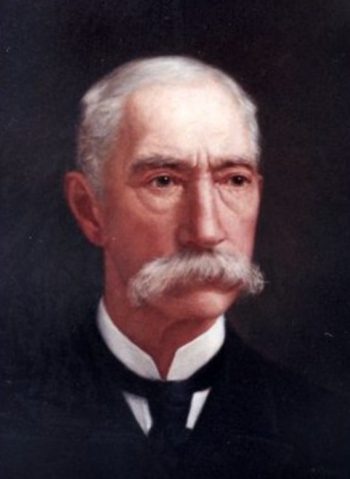
JOHNSON, DAVID R. (1826-1862). Captain, 51st New York Infantry, Company I. Originally interred at Green-Wood on March 30, 1862, and then in the Soldiers’ Lot 13536, grave 32, his remains were removed to Woodlawn Cemetery on June 29, 1912. A native New Yorker, he enlisted there as a captain on September 18, 1861, and was commissioned into the 51st the next day. His official promotion to captain occurred on October 29. Johnson was mortally wounded on March 14, 1862, at New Berne, North Carolina. Colonel Edward Ferrero (see) cited his valor in his field report from New Berne that day describing the fierce fighting, “Capt[ain] David R. Johnson, of Company I, who was severely wounded, displayed great bravery…” He succumbed there five days later.
JOHNSON, DWIGHT (1815-1897). Chairman, Brooklyn and Long Island Sanitary Fair. Born in Griswold, Connecticut, he moved to New York City in 1839 and settled in Brooklyn in 1844. Johnson served as chairman of the Brooklyn and Long Island Sanitary Fair under Abiel A. Low (see), the president of the General Committee, for the event in February and March 1864. The Sanitary Fair, under the auspices of the United States Sanitary Commission, was ultimately sponsored by the women of the Brooklyn auxiliaries and benefited Union soldiers who were in need of supplies and improved hygienic conditions. Johnson’s name was highlighted in the Tribute Book for the occurrence at the Academy of Music and nearby exhibition halls. Johnson and Mary Stranahan (see) signed lithograph posters advertising the event that were entitled, In Right Is Might. The poster shows George Washington in a toga, Winged Victory slaying a serpent which represents evil, and female nurses tending to a mortally wounded soldier in the foreground. Next to a crest advertising the Sanitary Fair is a crate marked Gettysburg. The poster is now in the CSHS collection of the Long Island University.
According to his obituary in The New York Times, Johnson was a lifetime member of the Long Island Historical Society, and was treasurer of the Brooklyn Mission and Tract Society. The first president of the Fireman’s Trust Company, he was also a member of the old Board of Supervisors for Kings County. Active in politics, Johnson ran unsuccessfully for mayor of Brooklyn as a Republican in 1873. He last lived at 35 Sydney Place in Brooklyn and died of pneumonia. Section 149, lot 20001.
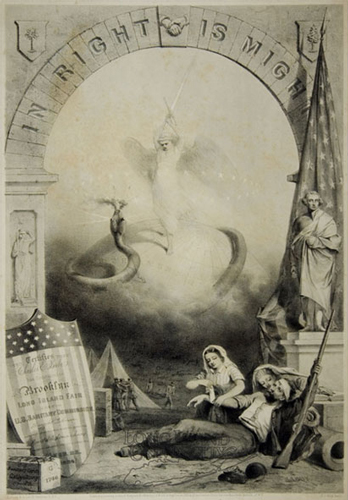
1864 Poster, In Right Is Might, United States Sanitary Commission Poster: Brooklyn and Long Island Fair.
JOHNSON, EVAN M. (1833-1915). Captain, 23rd Regiment, New York State National Guard, Company E; first lieutenant, 13th Regiment, New York State Militia, Company G. On April 23, 1861, he enlisted as a first lieutenant at Brooklyn, was commissioned into the 13th State Militia on May 14, and mustered out on August 6 at Brooklyn. In 1863, he was commissioned into the 23rd New York National Guard, also known as the Brooklyn City Guard, as a captain on June 18 and mustered out after 30 days on July 22 at Brooklyn. As per his obituary in the Brooklyn Daily Eagle, he was a member of the Brooklyn City Guard Veteran Association; members of the organization were invited to attend his funeral. His last residence was at 292 State Street in Flushing, Queens. Section 66, lot 626.
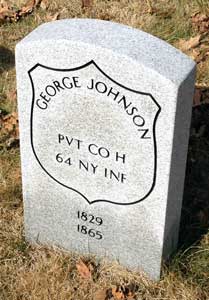
JOHNSON, GEORGE (1829-1865). Private, 64th New York Infantry, Company H. Of English birth, he enlisted at Hanover, New York, on August 19, 1862, and immediately mustered into the 64th. Taken as a prisoner of war on June 22, 1864, at Petersburg, Virginia, he was paroled on November 24, and returned to service on December 19, 1864. He last lived at 252 Myrtle Avenue in Brooklyn. Section 115, lot 13536 (Soldiers’ Lot), grave 98.

JOHNSON, GEORGE W. (1838-1891). Second lieutenant, 5th Minnesota Infantry, Company F. He enlisted and mustered into the 5th Minnesota as a private in on January 24, 1862. He was promoted to first sergeant on April 25, 1862, to second lieutenant the following month on May 28, and resigned on May 28, 1865. Section 167, lot 16959.
JOHNSON, JR., HENRY L. (1837-1907). Captain and assistant adjutant general, United States Volunteers Adjutant General Department; 5th Connecticut Infantry, Companies C and F. Born in Jewett City, Connecticut, Johnson graduated from Yale in 1860, and then studied law in Hartford. A resident of Griswold, Connecticut, he enlisted on July 22, 1861, as a commissary sergeant, and immediately mustered into the Field and Staff of the 5th Connecticut Infantry. He was promoted to second lieutenant and transferred to Company C on September 8, 1861, and then to first lieutenant on July 22, 1862, upon his transfer to Company F. According to Yale’s biographical data, he was assigned to signal duty on the Potomac during his enlistment. In the fall of 1862, he was made aide-de-camp on the staff of General Alfred Terry with whom he had served in Virginia at Suffolk, in New Berne, North Carolina, and at Port Royal and Charleston, South Carolina. On September 19, 1863, he was discharged for promotion and was commissioned into the United States Volunteers Adjutant General Department as captain and assistant adjutant general with an assignment as judge advocate of a military commission at Harrisburg, Pennsylvania, as per President Abraham Lincoln’s appointment. According to his obituary in The New York Times, which confirms his Civil War service, he became judge advocate on the staff of Major General Fitz John Porter (see) and was one of the first to scout in an observation balloon which he made at Yorktown, Virginia. The obituary notes that he was offered the post of major in the Connecticut Cavalry but declined that position. His Yale biography states that he also served as a member of the staff of General David Birney and later rejoined General Terry. He resigned on April 17, 1865.
After returning to Connecticut, Johnson first went to Nova Scotia where he carried out gold-mining operations. In 1868, he formed the brokerage firm of Ives & Johnson which he later handled by himself. He had been a member of the New York Stock Exchange from 1869-1903, at which time he transferred his seat to his son, Leeds Johnson. He last lived in New York City. He died of paralysis at the home of his niece on West Eighth Street in Plainfield, New Jersey, falling ill the week of his visit there. Section E, lot 19348.
JOHNSON, JAMES L. (1840-1896). Landsman, United States Navy. As per his widow’s pension data, Johnson enlisted on August 23, 1861, served as a landsman in the the United States Navy during the Civil War aboard the USS North Carolina and the USS Pampero, and was discharged on September 30, 1862. He last lived at 583 Pine Street in Camden, New Jersey. After his death from apoplexy in 1896, Harriet Johnson applied for and received a widow’s pension from the Navy, certificate 11,975. Section 188, lot 14528, grave 5.

JOHNSON, JOHN EVANS (1815-1870). Colonel, 9th Virginia Cavalry, Confederate States of America. Born in Warrenton County, North Carolina, he grew up in Virginia, where his father was a politician and horse breeder. Johnson attended the United States Military Academy from 1830 until 1832, when he resigned rather than face a court martial for being absent without leave. In 1837, he married Mary Swift, daughter of the mayor of Philadelphia, Pennsylvania, and they went to live in Halifax County, Virginia, and farm. He worked as an architect in Virginia, designing Berry Hill (built 1842-1843), Staunton Hill (built circa 1849), and other residences.
Johnson enlisted as a major in the Provisional Army of Virginia, Confederate States of America, on May 2, 1861, and was immediately assigned as a cavalry instructor at a training camp in Ashland. Just weeks later, on June 29, he was transferred to the Richmond headquarters for Virginia troops as assistant adjutant general. On November 5, 1861, he was reassigned as lieutenant colonel of the First Battalion, Virginia Cavalry. He became colonel of the 9th Virginia Cavalry in January 1862; his second in command was Lieutenant Colonel W. H. F. (“Rooney”) Lee, son of General Robert E. Lee. When Richard S. Ewell received the orders of his promotion to lieutenant general on May 25, 1863, he immediately wrote and requested that Johnson be appointed his aide. Johnson served as a lieutenant and aide-de-camp to Ewell until the Battle of Gettysburg, Pennsylvania. Ewell gave plaudits to Johnson in his field report from Northern Virginia Headquarters stating that he “…was placed in charge of the pickets on the Shenandoah, covering my flank and rear during the attack on Winchester, and I rested securely in that respect, trusting to his experience, judgment, and coolness…”
Immediately after the Civil War, Johnson and his wife, both in poor health, lived in rented quarters in Richmond. In April 1867, they left Virginia and moved to a middle class neighborhood, 68 West 19th Street in Manhattan. Mary, who suffered from chronic intestinal infection, died in 1868, and was interred at Green-Wood. John died of consumption (tuberculosis) two years later. His last address was 44 West 9th Street in Manhattan. A book about him, More Taste Than Prudence, was published in 1983. Section 176, lot 18418.
JOHNSON, JOHN H. (1844-1897). First lieutenant, 1st New York Cavalry, Company K. Born in Chicago, Illinois, Johnson’s family moved to New York City when he was an infant. He enlisted as a private at New York City on December 21, 1863, mustered into the 1st New York Cavalry, also known as the Lincoln Cavalry, on December 30, and mustered out on June 27, 1865, at Alexandria, Virginia. His obituary in the Brooklyn Daily Eagle notes that he also served as a drummer boy with the 2nd New York Regiment when the War broke out and that he was present at the first Battle of Bull Run, Virginia. During the three-year period from 1863-65, he distinguished himself through his bravery and skillful horsemanship, serving as chief of scouts under General Sheridan. Wounded in the left breast at the Battle of Winchester, Virginia, he refused to be relieved of duty. On July 16, 1864, he was commissioned first lieutenant, but did not muster. Johnson was most proud of his service and of being at Appomattox when Lee surrendered. He also engaged in these Virginia battles: Fisher’s Hill, Brown’s Gap, Piedmont, Mount Jackson, Cedar Creek, Ninevah, and Five Forks.
After the Civil War, he gained renown in the mounted squad of the New York police and was named commanding sergeant in 1875. Johnson and his horse, Pasha, were a familiar sight on Schermerhorn Street in Brooklyn. He was active in the Ulysses S. Grant G.A.R. Post #327, which he joined on January 30, 1883, assuming many leadership positions, and accompanied Grant’s body to its final resting place at Riverside. A resident of 514 9th Street in Brooklyn, he was given a military funeral. The cause of his death was phthisis. Section 71, lot 12187, grave 3.
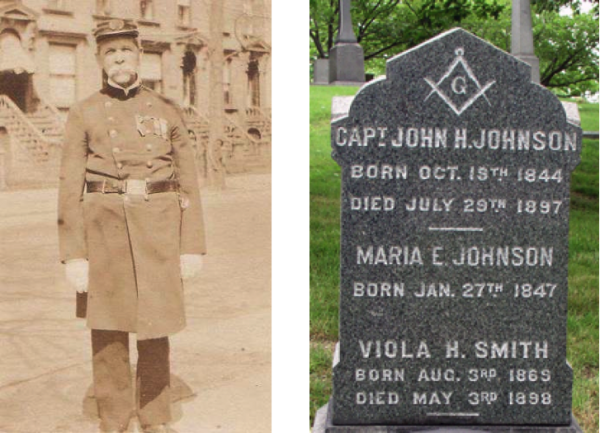
JOHNSON, JOSIAH (1832-1919). Sailor, United States Navy. Born in Brooklyn, he served with the Navy during the Civil War. He was a prominent steamer pilot after the War, and a member of the Sandy Hook Pilot’s Association. His last residence was in North Stamford, Connecticut. His death was attributed to chronic diffuse nephritis. Section 157, lot 15890.
JOHNSON, THOMAS H. (1830-1871). Private, 92nd New York Infantry, Company A. Originally from Potsdam, New York, Johnson enlisted there as a private on October 10, 1861, mustered into the 92nd New York on October 30, and mustered out of service on January 14, 1863, at New Berne, North Carolina. His last address was on Summit Street in Brooklyn. He died from phthisis. Section 61, lot 12719.
JOHNSON, WILLIAM C. (1839-1914). Sergeant, 127th New York Infantry, Company I. Born in Ireland, he enlisted on August 22, 1862, at Riverhead, New York, as a private, and mustered into the 127th New York on September 8. During his military service, he was promoted to corporal on May 14, 1863, to sergeant on August 1, 1863, and mustered out on June 30, 1865, at Charleston, South Carolina. His last residence was 672 Washington Street, New York City. His death was caused by mitral regurgitation, a heart condition. Section 135, lot 30010, grave 288.
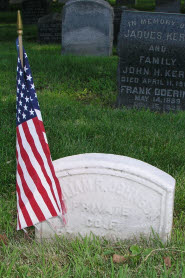
JOHNSON, WILLIAM R. (1834-1895). Private, 67th New York Infantry, Companies F, A, and E; 65th New York Infantry, Company E. Johnson enlisted on May 10, 1861, at Astoria, New York, and mustered into Company F of the 67th New York on June 20 of that year. He re-enlisted on December 25, 1863, transferred to Company A of the same regiment on June 19, 1864, then to Company E on July 4, and transferred into the 65th on September 1, 1864, before mustering out on July 17, 1865, at Hall’s Hill, Virginia. In December 1891, he joined the G.A.R. He died from complications of paralysis. Section 135, lot 14964, grave 650.
JOHNSON (or JOHNSTON), WILLIAM W. (1844-1876). Second lieutenant, 56th Regiment, New York State National Guard, Company B; private, 22nd Regiment, New York State National Guard, Company F. A native New Yorker, he enlisted as a private at New York City on May 28, 1862, mustered into the 22nd National Guard that day, and mustered out three months later on September 5 at New York City. After re-enlisting at Brooklyn on July 11, 1864, he was commissioned into the 56th National Guard on August 2, and mustered out on November 6, 1864, at New York City. At the time of his death, he lived at 384 17th Street in Brooklyn. Section 187, lot 19720.
JOHNSTON, ANDREW (1833-1870). Private, 139th New York Infantry, Company D. Of Irish origin, Johnston enlisted as a private on August 14, 1862, at Brooklyn, and mustered into the 139th New York on September 9. He mustered out of service on June 19, 1865, at Fort Monroe, Virginia. His last residence was at 223 Varick Street in Manhattan. His death was caused by “insolation (sunstroke).” Section 133, lot 17931, grave 401.
JOHNSTON, ARCHIBALD (1827-1883). Captain, 62nd New York Infantry, Company K. A native of Ireland, he enlisted at New York City on June 14, 1861, and was commissioned into the 62nd New York the next month on July 3. His muster roll indicates that he was present in August, October, and December of 1861. He was dropped and listed as a deserter on October 15, 1862. He last lived at 172 Partition Street, Brooklyn. Records indicate that his death was caused by consumption.
His widow, Theodoria J. Johnston, applied for a pension in 1884, application 363,824, but it does not appear to have been certified. She reapplied in 1887, stating her husband’s resignation in 1862 was caused by a “breaking down of his system from exposure.” A formal response on September 20, 1888, stated that the soldier was absent with leave in May and June of 1862, absent without leave in July and August, dropped from the rolls on August 18, and listed as a deserter that October. There were no reports of hospitalization or disability. His physician stated that he had contracted rheumatism that became disabling while in service. Section 150, lot 19761.
JOHNSTON, ARTHUR (1842-1922). Private, 139th New York Infantry, Company D. Originally from Ireland, he enlisted at Brooklyn on August 30, 1862, and mustered in on September 9. An article in the Brooklyn Daily Eagle on July 10, 1887, noted that he was wounded in the thigh by grapeshot at the Battle of Fort Harrison, Virginia, on September 29, 1864, and returned to action before his wound healed. He mustered out on June 19, 1865, at Richmond, Virginia. After the War, he was a firefighter with Engine Company #7 in Brooklyn. As per his obituary in the Brooklyn Daily Eagle, he was a member of the 139th Veteran Association and the 20 Year Veteran Firemen’s Association. Members of both organizations were invited to attend his funeral. Johnston last lived at 449 East 7th Street in Brooklyn. He died of broncho-pneumonia. Section 4, lot 33965, grave 3.
JOHNSTON, CHARLES (1810-1874). Boatswain, United States Navy. Johnston was appointed a boatswain in the United States Navy on May 21, 1839. The 1865 New York State census reported that he lived in Brooklyn in a frame house valued at $5000; he was married and the father of eight children. After a career in the Navy, he retired from service on March 24, 1869. He last lived at 409 Lafayette Avenue in Brooklyn. Sadly, Lucy Johnston, his widow, who is interred with him, died five days after him after a short illness. He was identified as having served in the Navy in his wife’s obituary. Section 142, lot 10153.

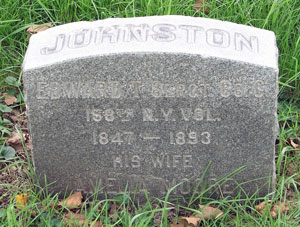
JOHNSTON, JR., EDWARD T. (1847-1893). Sergeant, 158th New York Infantry, Company C. After he enlisted at Brooklyn as a sergeant on September 13, 1862, Johnston mustered immediately into Company C of the 158th New York. He mustered out at Richmond Virginia, on June 30, 1865. He was a member of the G. K. Warren Post #286 of the G.A.R. His last residence was at 151 Prince Street, Brooklyn. His death was caused by rheumatism. Section 135, lot 27263, grave 3278.
JOHNSTON, HARRY H. (1840-1874). Acting ensign, United States Navy. Johnston began his service in the Navy as an acting ensign on August 12, 1863. He resigned on April 27, 1864, returned as a mate after the War on September 27, 1867, resigned on May 20, 1869, and returned later that year on November 4. He last lived in Milton, Florida. Johnston’s death was attributed to “paralysis of the brain.” Section 92, lot 10153.

JOHNSTON, ISAAC H. (1829-1908). Private, 127th New York Infantry, Companies D and I; 54th New York Infantry, Company I. After enlisting on January 22, 1864, he immediately mustered into the 127th New York, Company D. On March 3, 1864, he was transferred to Company I, then transferred to the 54th New York on June 22, 1865. He was a resident of Clarkson Street in Brooklyn when he died from nephritis. Section 60, lot 1073.


JOHNSTON, JOSEPH (1837-1863). Corporal, 82nd New York Infantry, Companies K and F. Johnson, a native of New York, enlisted as a private at New York City on May 21, 1861, mustered that day into Company K of the 82nd New York, and transferred into Company F of the same regiment on June 20. At some unspecified time, he was promoted to corporal, but then reduced to private on or about May 17, 1862. He was wounded at the Battle of Gettysburg, Pennsylvania, on July 2, 1863, and died there seven days later. Section 115, lot 8999, grave 336.
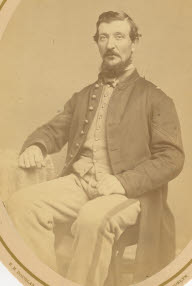
JOHNSTON, ROBERT (1842-1916). Private, 9th New York Infantry, Company K. A New York City native, Johnston enlisted there as a private on May 3, 1861, and mustered the day into Company K of the 9th New York Infantry, also known as Hawkins Zouaves. He mustered out on May 20, 1863, at New York City.
His online family tree shows that he was married and living in Brookhaven, Suffolk County in 1880. In 1890, Johnston’s application for an invalid pension was approved, certificate 1,089,365. As per the 1900 census, he was living at 268 West 12th Street in Manhattan with his wife Josephine, née Coulter, whom he married in 1870, and six children; he was then employed as a cooper (barrel-maker). The 1905 New York State census reports no occupation but he was still living in Manhattan with his wife and seven children, including adult children and youngsters as little as age six. According to the 1910 census, he was living in Manhattan with his wife of 40 years and six children ranging in age from ten to 39; he was a cooper at the Navy Yard. The 1915 New York State census reflects a move to Brooklyn; he was living with his wife and three children.
As per his obituary in the Brooklyn Standard Union, Johnston was a member of the Edgar Addison Kimball Post #100 of the G.A.R. He last lived in Brooklyn. A month after his death in 1916, Josephine Johnston applied for and was granted a widow’s pension, certificate 828,464. Section 82, lot 2037.
JOHNSTON, THOMAS WEIR (1820-1870). Second lieutenant, 5th New York Heavy Artillery, Companies H and A. Born in Boston, Massachusetts, he was 5′ 11½” tall with a fair complexion, dark eyes and hair. A resident of 711 Myrtle Avenue in Brooklyn, Johnston enlisted as a private at New York City on August 7, 1862, at the age of 42, and mustered into Company H of the 5th New York Heavy Artillery the next day. On November 25, 1862, he was promoted to corporal of his company and reached the rank of sergeant on June 1, 1863. He was reduced in rank to private on November 1, 1863, but was subsequently promoted to sergeant on June 30, 1864. On January 2, 1865, he was promoted to the rank of second lieutenant, was transferred intra-regimentally to Company A on March 9, and mustered out of service at Harpers Ferry, West Virginia, on July 19, 1865. Johnston’s descendants, the Henderson family, have transcripts of 22 letters he wrote to his 13 year old son and to his brother during his service between September 30, 1862 and July 12, 1865. In one letter to his son (from Fort Marshall, Baltimore, dated September 30, 1862, and excerpted below with corrected spelling), he gives him fatherly advice:
…Do not be idle even for a moment but be in earnest when you work …perform your task with skill, this will greatly add to your good name. For those who are competent and obliging are always preferred to careless and indifferent. But above all things my Dear son I exhort you to be “steadfast” in your religion and practice all its holy commands…Finally be “very” clean in your habits and abling in manners. Govern your temper and never a vindictive thought towards any one even the most humble.
In another letter (from Harpers Ferry, West Virginia, dated March 3, 1865), in response to his son’s writing that he wants to join a drum corps, Johnston tries to dissuade him:
…you “speak” about joining a Drum Corps, I am very sorry to “hear” it. Did you ever know any one that ever “made” “anything” by “being” a drummer…We have 12 in the “Regiment.” They “get” 12 dollars a month. The rest of the band “gets” 16 dollars. If you want to “learn” “music” “learn” something that will pay or something that you can “enjoy” in the house and I will try to help you. We have had a good “many” “drummers” with us and “they” all turn out bad…
Johnston clearly misses his family. An excerpt from a letter written in summer of 1865 (undated) follows:
Give my love to mother, sister and brother. Be good to them…W. Babcock got his discharge today. I sent to the War Department today to see if I could get a furlough for a few days as I should like to see you all. I write this at leisure in my room. Been officer of the day. I don’t have to drill but must be on hand for anything that may turn up. I have just received your letter of the 23rd and I am glad to hear that you are all well. I have a horse furnished me when on duty as officer of the day as I have to visit the pickets as well as the guard. The colonel is acting as general…I should like to see you and I think you would like the place if you did not have to stay long but I may have a chance to come and see you all. So good by and may God bless you all.
Johnston worked as an expressman after the War. His last residence was on Nostrand Avenue in Brooklyn where he died of tuberculosis contracted during the War. Section 116, lot 4073, grave 177.
JOHNSTON, WILLIAM O. (1836-1866). Private, 13th Regiment, New York State National Guard, Company B. Born in Scotland, Johnston enlisted at Brooklyn as a private on May 28, 1862, mustered into his company the same day, and mustered out on September 12. Johnston last lived at 94 Lawrence Street in Brooklyn and he died of consumption. Section A, lot 8998, grave 576.
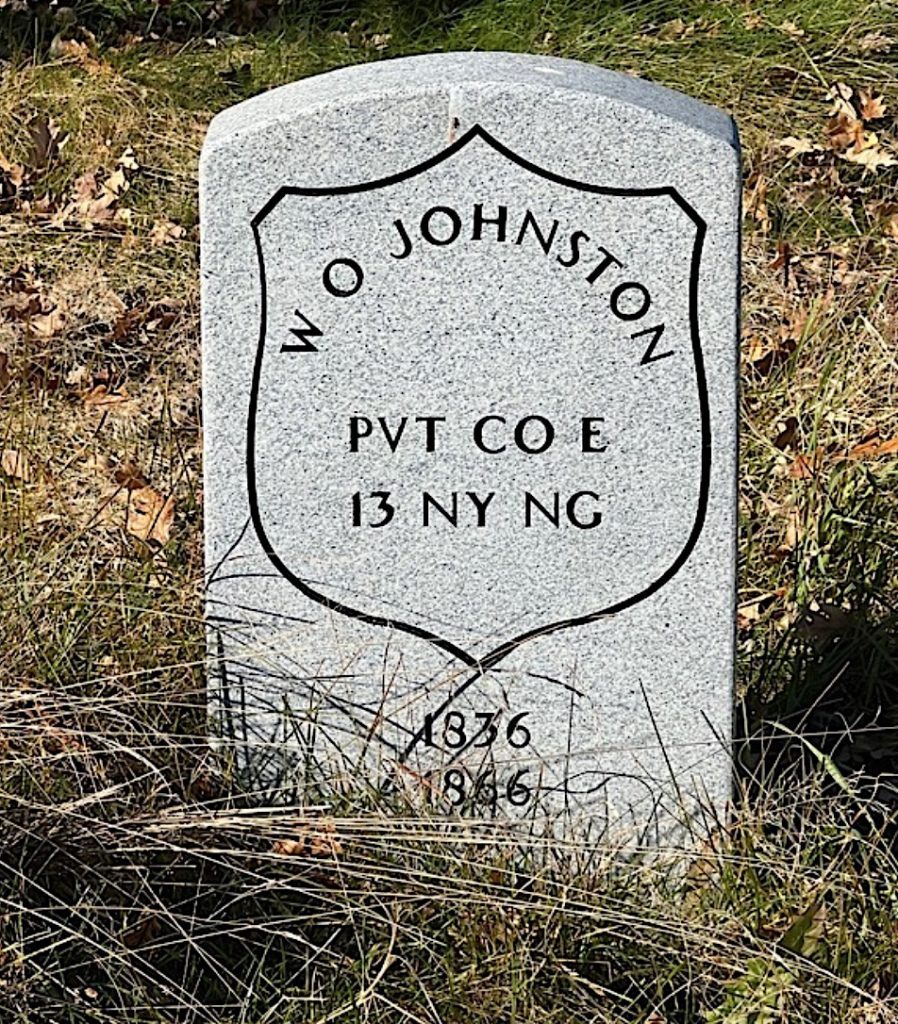
JOHNSTONE, JOHN ALEXANDER (1834-1883). Acting volunteer lieutenant commander, United States Navy. Originally interred at Green-Wood in lot 4969, his remains were removed from the cemetery in 1906. A ship captain by profession, born in Annan, Dumfries and Galloway, Scotland, he enlisted in the Navy on December 4, 1861, with the rank of acting master. He was promoted to acting volunteer lieutenant on November 12, 1863. On April 21, 1865, while commanding the USS Cornubia, part of the West Gulf Blockading Squadron, he captured the British blockade runner Chaos which was carrying a cargo of cotton off Galveston, Texas. (The Cornubia was originally a Confederate blockade runner but it was captured on November 8, 1863, and entered service in the Union Navy on March 17, 1864.) Johnstone was promoted to acting volunteer lieutenant commander on May 19, 1865. On May 24, he captured the Le Compt which was carrying a load of armaments, and helped sink the Denbigh, a Confederate steamer. He was honorably discharged on December 9, 1865. According to a descendant, he received a Navy pension. While living in New York, he died of a fractured skull on the Rutgers Street dock, New York City.
JOHNSTONE, ROBERT (1825-1891). Lieutenant colonel, 5th New York Cavalry. A native of Ireland, he enlisted at New York City on July 27, 1861, and was commissioned into the Field and Staff of the 5th New York Cavalry on October 2. On March 8-9, 1863, he was almost captured by Confederate Cavalryman John Singleton Mosby, the “Gray Ghost,” in a daring raid on Union forces at Fairfax Court House, Virginia, in which Union General Edwin Stoughton was captured. Mosby wrote in his memoirs:
A ludicrous incident occurred when we were leaving Fairfax. A window was raised, amd a voice inquired, in an authoritative tone, what that cavalry was doing in the street. He was answered by a loud laugh from my men, which was notice to him that we were not his friends. I ordered several men to dismount and capture him. They burst through the front door, but the man’s wife met them in the hall and held her ground like a lioness to give her husband time to escape. He was Colonel Johnstone, who was in command of the cavalry during Wyndam’s absence. He got through the back door in his night clothes and barefooted, and hid in the garden. He spent some time there as he did not know when we left, and his wife could not find him.
After the incident, Johnstone had the notorious nickname, “Outhouse Johnstone.” He was cashiered out on December 5, 1863. He last lived at 290 Hoyt Street in Brooklyn. His death was caused by bronchitis. Section 2, lot 5499, grave 1502.